What are the most common injuries in lacrosse. How can players prevent ankle sprains, contusions, and concussions. What should athletes do to treat wrist fractures and knee sprains. How does proper equipment and training reduce injury risk in lacrosse.
Understanding the Risks: Top 5 Lacrosse Injuries
Lacrosse is an exhilarating sport that combines speed, agility, and physical contact. While it offers numerous benefits to players, it also carries the risk of various injuries. Understanding these common injuries is crucial for players, coaches, and parents to ensure proper prevention and treatment strategies are in place.
1. Ankle Sprains: The Most Frequent Lacrosse Injury
Ankle sprains top the list of lacrosse injuries due to the sport’s fast-paced nature and frequent changes in direction. These injuries occur when the ankle is twisted or turned abnormally, stretching or tearing the ligaments.
Why are ankle sprains so common in lacrosse? The sport’s requirement for quick movements and sudden stops puts significant stress on the ankles. Players often need to pivot, dodge, or change direction rapidly, increasing the risk of rolling their ankles.
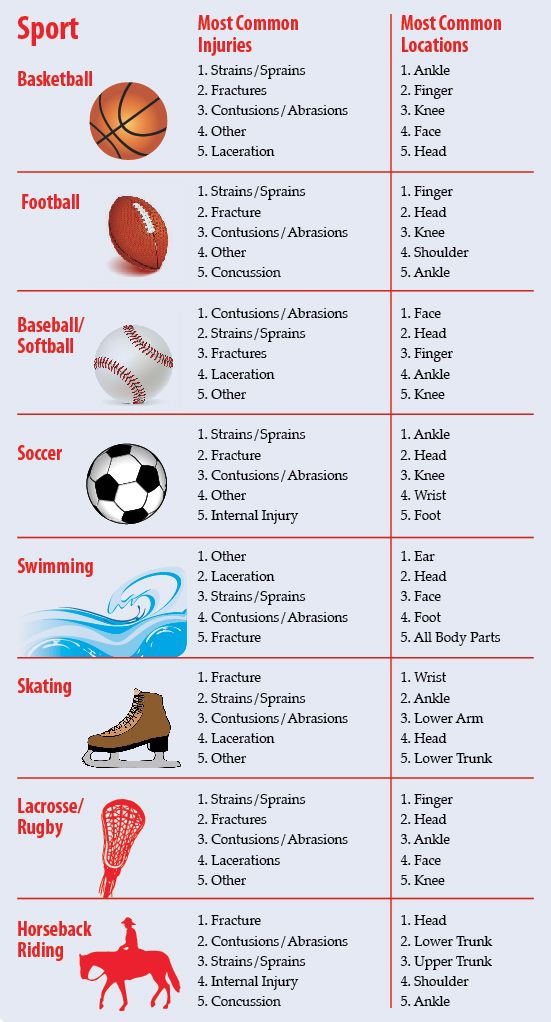
- Symptoms: Pain, swelling, bruising, and difficulty bearing weight
- Prevention: Proper warm-up, ankle strengthening exercises, and wearing supportive footwear
- Treatment: Rest, ice, compression, and elevation (RICE method)
2. Contusions: Bruises from Contact
Contusions, or bruises, are another frequent injury in lacrosse. These occur due to direct blows from lacrosse sticks, balls, or collisions with other players.
Are contusions in lacrosse more than just surface-level bruises? While many contusions are superficial, some can be deep tissue injuries that cause significant pain and limited mobility.
- Common areas: Thighs, arms, and torso
- Prevention: Wearing proper protective gear, including padding
- Treatment: Immediate application of ice and anti-inflammatory medication
Protecting the Upper Body: Wrist Fractures and Rib Injuries
The upper body is particularly vulnerable in lacrosse due to stick checks and falls. Two injuries that players should be aware of are wrist fractures and rib injuries.

3. Wrist Fractures: A Risk for Stick-Wielding Players
Wrist fractures can occur when players fall onto an outstretched hand or receive a direct blow to the wrist area.
How can players reduce the risk of wrist fractures? Proper falling techniques and wrist strengthening exercises can help prevent these injuries. Additionally, some players opt to wear wrist guards for added protection.
- Symptoms: Severe pain, swelling, and visible deformity
- Prevention: Strengthening exercises and proper falling techniques
- Treatment: Immobilization with a cast or splint, and in severe cases, surgery
Rib Fractures: The Importance of Proper Padding
While not in the top 5, rib fractures are a significant concern in lacrosse. They often result from direct hits with sticks or falls onto the side of the body.
Why should players prioritize wearing rib pads? Rib pads, although not mandatory, can significantly reduce the risk of rib fractures. These injuries can be particularly dangerous due to the risk of lung puncture.

- Symptoms: Sharp pain when breathing or moving, tenderness in the rib area
- Prevention: Wearing rib pads and proper tackling techniques
- Treatment: Rest, pain management, and gradual return to activity under medical supervision
Lower Body Concerns: Knee Sprains and Hamstring Strains
The lower body bears much of the stress in lacrosse due to the constant running, cutting, and pivoting movements. Two common injuries in this area are knee sprains and hamstring strains.
4. Knee Sprains: Navigating the Twists and Turns
Knee sprains, particularly to the anterior cruciate ligament (ACL) and medial collateral ligament (MCL), are serious concerns in lacrosse. These injuries often occur during sudden changes in direction or awkward landings.
How do knee sprains impact a player’s season? Knee sprains can range from minor to severe, with the most serious cases requiring surgery and extensive rehabilitation, potentially ending a player’s season.
- Symptoms: Pain, swelling, instability, and difficulty bearing weight
- Prevention: Proper warm-up, strength training, and agility exercises
- Treatment: RICE method, physical therapy, and in severe cases, surgery
Hamstring Strains: The Sprint-Related Injury
Hamstring strains, while not in the top 5, are common in lacrosse due to the frequent sprinting and sudden stops required in the game.
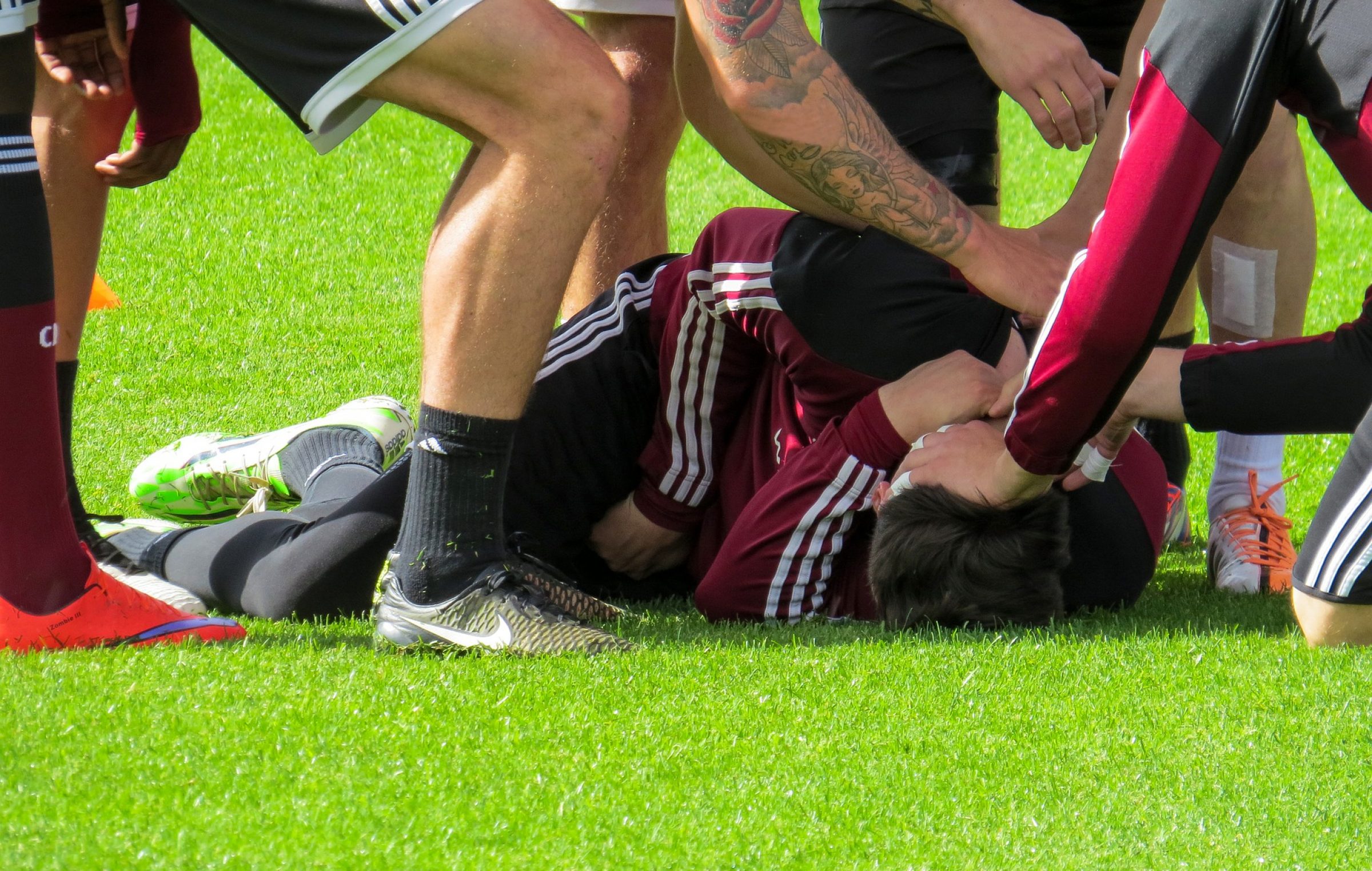
Why are hamstring strains particularly troublesome for lacrosse players? These injuries can be slow to heal and prone to re-injury, potentially sidelining players for extended periods.
- Symptoms: Sudden pain in the back of the thigh, difficulty walking
- Prevention: Proper warm-up, stretching, and strengthening exercises
- Treatment: RICE method, gradual return to activity, and physical therapy
Head Injuries in Lacrosse: Concussion Awareness
While less common than other injuries, head injuries, particularly concussions, are a serious concern in lacrosse due to their potential long-term effects.
5. Concussions: The Silent Threat
Concussions in lacrosse can occur from direct blows to the head, collisions with other players, or falls.
Why is concussion awareness crucial in lacrosse? Despite advancements in helmet technology, concussions remain a risk. Proper recognition and management of concussions are essential to prevent more severe brain injuries.
- Symptoms: Headache, dizziness, confusion, memory problems
- Prevention: Proper technique, rule enforcement, and wearing properly fitted helmets
- Treatment: Immediate removal from play, cognitive rest, and gradual return-to-play protocol under medical supervision
Injury Prevention Strategies for Lacrosse Players
While injuries are an inherent risk in lacrosse, many can be prevented or minimized through proper preparation and techniques.
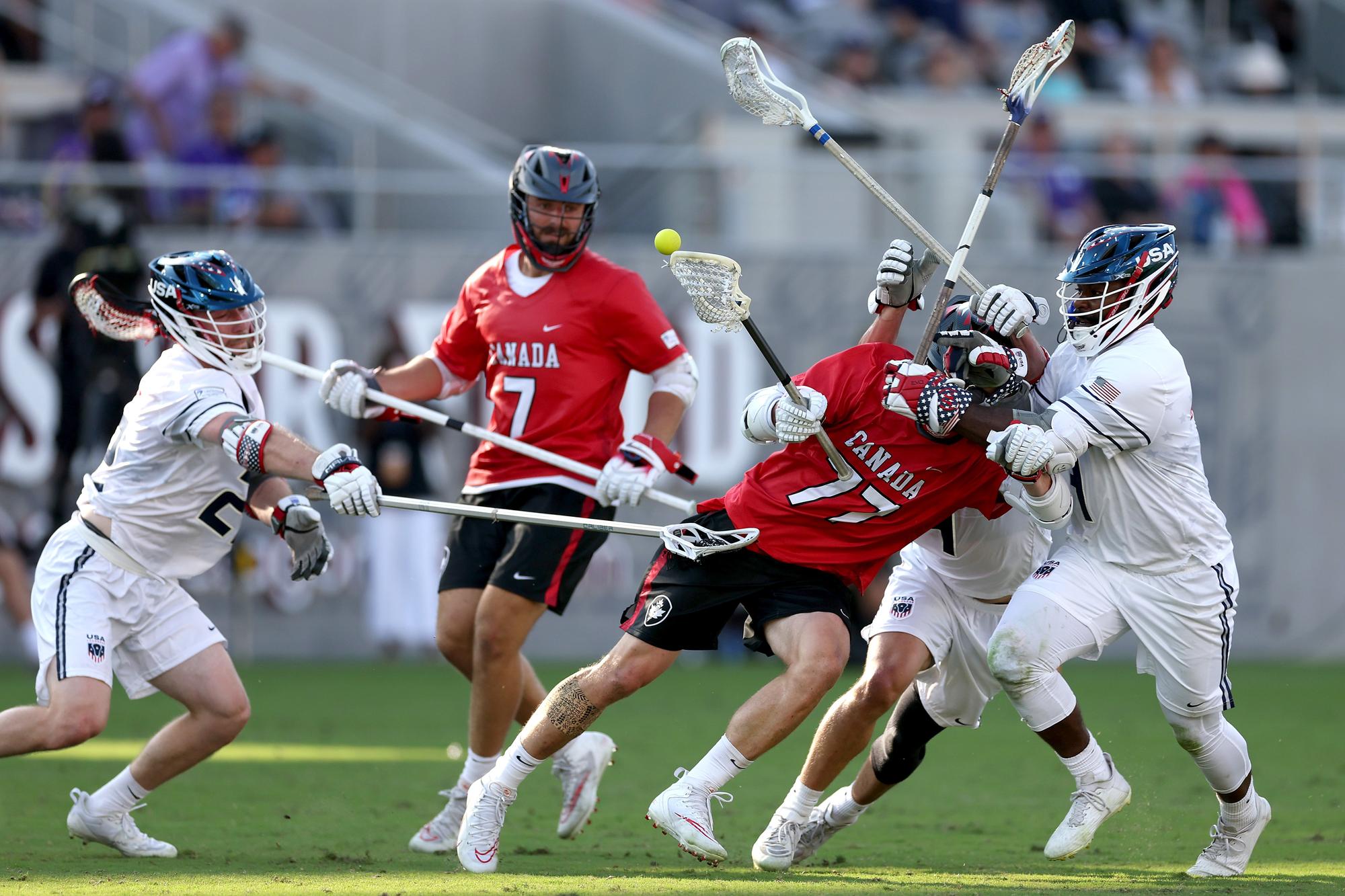
Proper Conditioning and Training
A well-rounded conditioning program is crucial for injury prevention in lacrosse. This should include cardiovascular fitness, strength training, and flexibility exercises.
How does proper conditioning reduce injury risk? Conditioning helps improve overall physical fitness, enhances muscle strength and flexibility, and improves balance and coordination – all factors that contribute to injury prevention.
- Cardiovascular training: Improves endurance and reduces fatigue-related injuries
- Strength training: Builds muscle strength to support joints and improve overall stability
- Flexibility exercises: Enhance range of motion and reduce the risk of muscle strains
Equipment and Protective Gear
Proper equipment is a crucial aspect of injury prevention in lacrosse. Players should ensure they have well-fitted, high-quality gear.
What are the essential pieces of protective equipment for lacrosse players? Key items include helmets, mouthguards, gloves, shoulder pads, and proper footwear. Optional but recommended items include rib pads and arm pads.

- Helmets: Must be properly fitted and meet safety standards
- Mouthguards: Protect teeth and may help reduce concussion risk
- Gloves and pads: Provide protection against stick checks and falls
- Footwear: Should provide good ankle support and traction
Treatment and Recovery for Lacrosse Injuries
Proper treatment and recovery are crucial for lacrosse players to return to the game safely and prevent re-injury.
Immediate Care: The RICE Method
For many lacrosse injuries, particularly sprains and strains, the RICE method is the first line of treatment.
What does RICE stand for in injury treatment? RICE is an acronym for Rest, Ice, Compression, and Elevation. This method helps reduce pain and swelling in the immediate aftermath of an injury.
- Rest: Avoid putting weight on the injured area
- Ice: Apply ice for 15-20 minutes at a time, several times a day
- Compression: Use an elastic bandage to reduce swelling
- Elevation: Raise the injured area above the heart to minimize swelling
Professional Medical Care
While minor injuries can often be treated at home, more severe injuries require professional medical attention.

When should a lacrosse player seek medical care for an injury? Players should consult a healthcare professional if they experience severe pain, inability to bear weight, visible deformity, or any signs of a concussion.
- Sports medicine physicians: Specialize in treating athletic injuries
- Physical therapists: Can provide rehabilitation exercises and techniques
- Athletic trainers: Often the first line of care for on-field injuries
Long-Term Injury Management in Lacrosse
Managing injuries in lacrosse isn’t just about immediate treatment – it also involves long-term strategies to prevent re-injury and maintain overall health.
Rehabilitation and Return-to-Play Protocols
Proper rehabilitation is crucial for lacrosse players recovering from injuries. This process should be gradual and tailored to the specific injury and the player’s needs.
What are the key components of a successful rehabilitation program? A comprehensive rehab program typically includes pain management, restoration of range of motion, strength training, and sport-specific exercises.
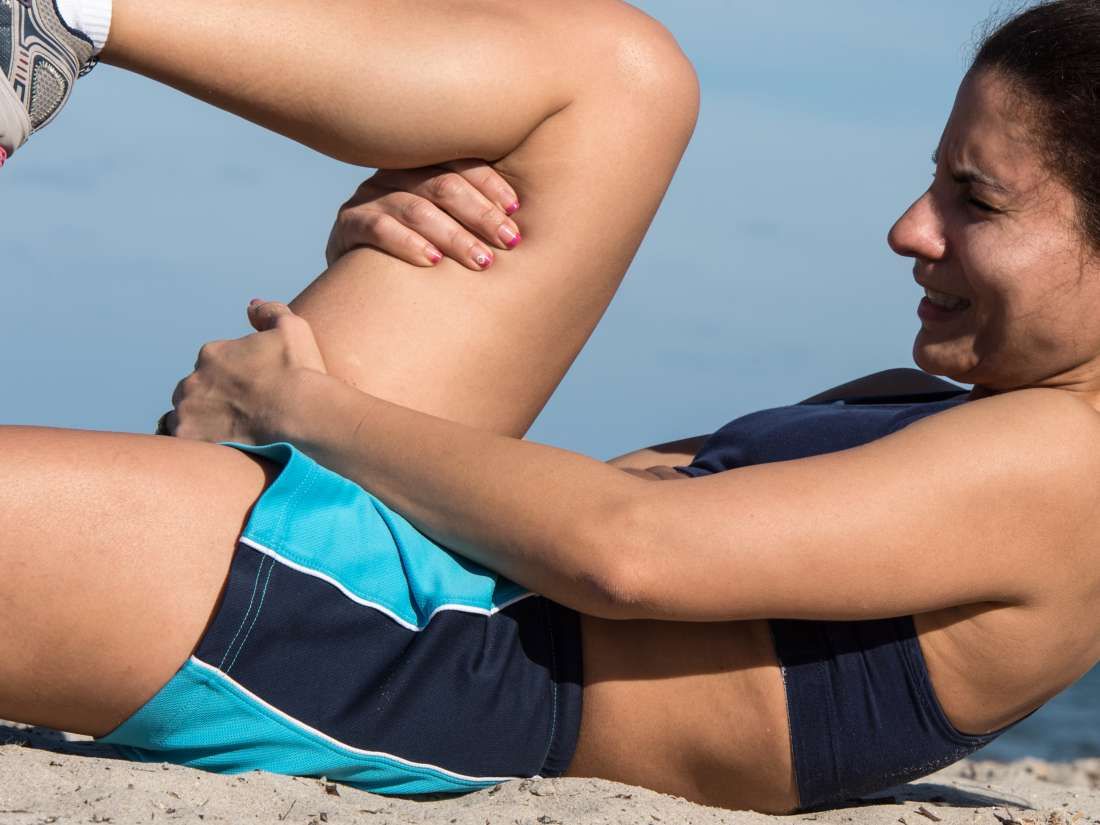
- Gradual progression: Slowly increase activity levels as healing progresses
- Functional testing: Ensure the player can perform sport-specific movements safely
- Mental preparation: Address any psychological barriers to returning to play
Injury Prevention Programs
Many lacrosse teams and organizations are implementing injury prevention programs to reduce the risk of common injuries.
How effective are injury prevention programs in lacrosse? Studies have shown that comprehensive prevention programs can significantly reduce the risk of injuries, particularly ACL injuries and concussions.
- Neuromuscular training: Improves balance, coordination, and body awareness
- Technique correction: Focuses on proper form for cutting, landing, and shooting
- Education: Teaches players about injury risks and prevention strategies
The Role of Nutrition in Injury Prevention and Recovery
Proper nutrition plays a crucial role in both preventing injuries and supporting recovery in lacrosse players.

Nutrition for Injury Prevention
A well-balanced diet can help lacrosse players maintain their overall health and reduce the risk of injuries.
What nutrients are particularly important for injury prevention in lacrosse? Key nutrients include protein for muscle health, calcium and vitamin D for bone strength, and antioxidants to reduce inflammation.
- Protein: Supports muscle repair and growth
- Calcium and Vitamin D: Essential for bone health
- Antioxidants: Help reduce inflammation and support overall health
- Hydration: Crucial for maintaining joint health and preventing fatigue
Nutritional Support for Injury Recovery
When recovering from an injury, proper nutrition can help speed up the healing process and support rehabilitation efforts.
How should a lacrosse player adjust their diet when recovering from an injury? During recovery, players should focus on anti-inflammatory foods, adequate protein intake, and foods rich in vitamins and minerals that support tissue repair.
- Anti-inflammatory foods: Berries, fatty fish, nuts, and leafy greens
- Protein: Supports tissue repair and muscle maintenance during inactivity
- Vitamin C: Aids in collagen production for ligament and tendon repair
- Zinc: Supports immune function and wound healing
By understanding the most common lacrosse injuries, implementing effective prevention strategies, and following proper treatment and recovery protocols, players can minimize their risk of injury and enjoy a long, successful lacrosse career. Remember, while the sport inherently carries some risk, many injuries can be prevented or effectively managed with the right approach. Always consult with healthcare professionals for personalized advice on injury prevention and treatment.
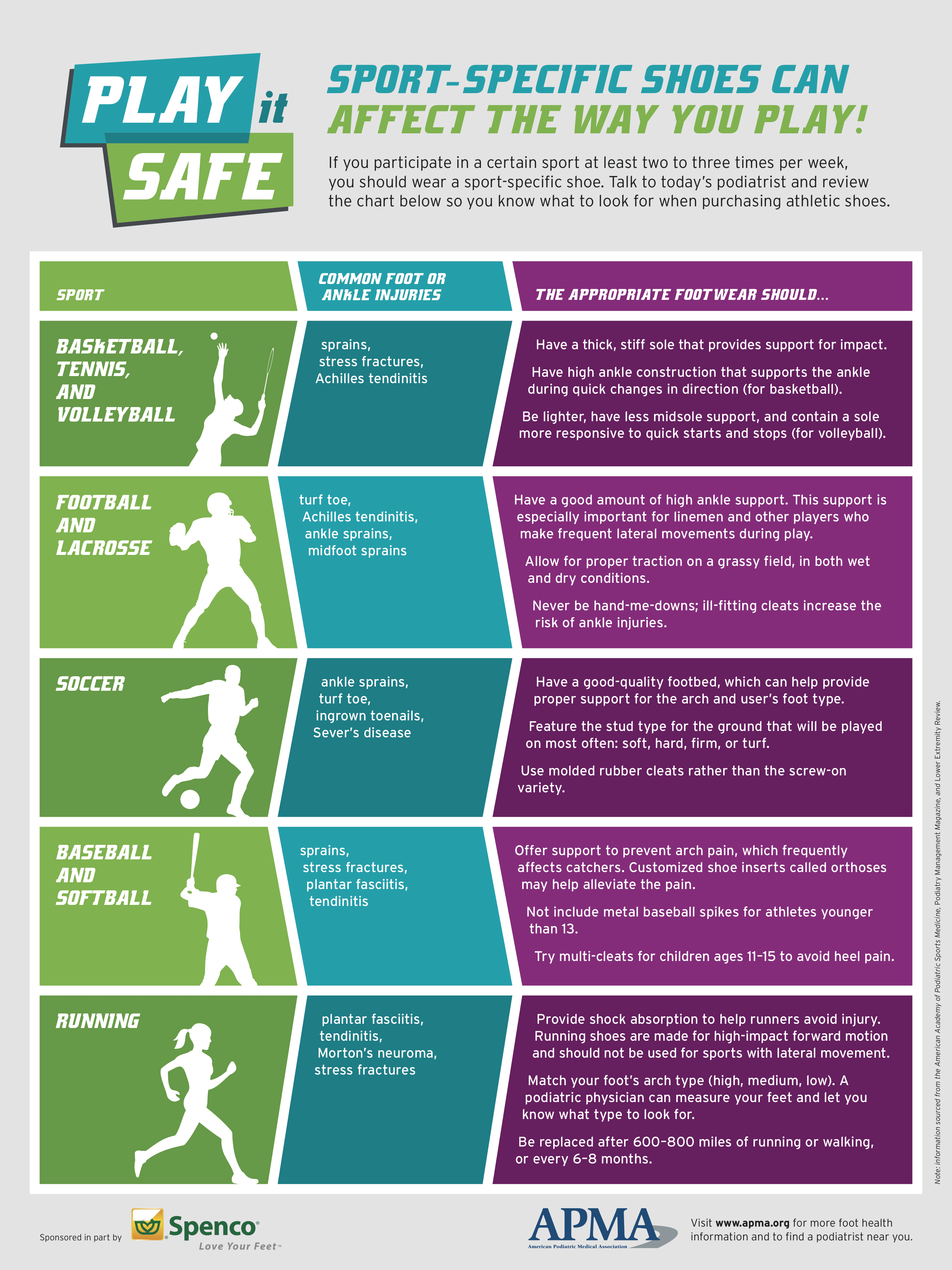
The Most Common Lacrosse Injuries
Lacrosse Injuries You Should Know About
Those who engage in lacrosse will definitely need to be aware of the various injuries that can be sustained. If you play this sport you will have to find out as much as possible about some of the different injuries that you can encounter and how to deal with them properly. Injury is an inevitable part of most contact sports, including this one.
Sprains and Strains
Ligament sprains and muscular or tendon strains are the most common injuries seen in most sports, including lacrosse.
• Ankle and knee sprains — these ligament sprains commonly occur because of the sharp cutting and dodging movements required to play lacrosse.
• Hamstring muscle strains — unlike a ligament sprain, a strain occurs when a muscle is stretched or contracted too forcefully during movement. In lacrosse, the culprit tends to be the hamstring muscle group.
Proper strengthening and stretching can help prevent sprains and strains throughout a season. Continue to maintain strong, flexible muscles and your chances of injury will significantly decrease.
Continue to maintain strong, flexible muscles and your chances of injury will significantly decrease.
Contusions (Bruises)
Lacrosse is played with a long metal stick and a rock solid rubber ball that can cause major damage if enough force is put behind them. Unfortunately, you will come in contact with one, or both, at some point during your lacrosse career.
The most common outcome of these encounters is a contusion (bruise). Some contusions are very superficial and you can see the discoloration in the skin. Others are located deep within muscle and soft tissue and can be very painful. Icing and anti-inflammatory medication are the keys to managing contusions. Be sure to ice and medicate, as soon as possible, to prevent future complications.
Rib Fractures
Most players like to wear the least amount of padding because they feel they can move easier and quicker, thus increasing their production on the field. Consequently, rib pads are usually the first piece of equipment they leave on the sideline. Rib pads are not required to play lacrosse, but are highly recommended. A stick check across an unprotected rib cage is an easy way to fracture or break several ribs. The major concern with a rib fracture is the possibility of puncturing a lung. If you want to stay in the game, wear your rib pads.
Rib pads are not required to play lacrosse, but are highly recommended. A stick check across an unprotected rib cage is an easy way to fracture or break several ribs. The major concern with a rib fracture is the possibility of puncturing a lung. If you want to stay in the game, wear your rib pads.
Concussions
Although concussions in lacrosse are very rare, they can happen. The technology behind lacrosse helmets is still light years away from football helmets. And, even though helmets cannot prevent concussions, it’s important to wear one that’s properly fitted. If you suspect a concussion, contact your local Athletic Trainer or Sports Medicine Physician for proper diagnosis and treatment. Lacrosse is a very fun and exciting game at all levels. Remember to take the time to prepare, just as you would for any sport, test, or competition.
As always, consult your local Sports Medicine Physician if you have any questions or concerns. As players prepare for their season, it’s important to set both position and season goals with their coaches before they train.
How can Lacrosse Injuries be Treated?
With any injury, participation should be stopped until an assessment is made by a qualified health professional. For minor injuries, treatment usually includes rest, ice, and elevation.
Other injuries may be more serious, and require a longer period of rest and rehabilitation. These athletes may be allowed to participate with modifications, depending on the risk for re-injury. In the most severe cases, surgery may be required. All head injuries should be thoroughly evaluated. Athletes should return to play only after appropriate physician evaluation, on a graduated schedule, and only when completely symptom free.
It is very important that you treat any injuries you sustain from playing lacrosse so you can start healing as soon as possible. The longer you wait to treat your injuries, the longer it is going to take for your body to heal completely.
5 Most Common Lacrosse Injuries
What are the most common lacrosse injuries?
- Ankle Sprains
- Contusions
- Wrist fractures
- Knee Sprains
- Back Pain
1.
 Ankle Sprains
Ankle Sprains
The most common injury that happens during the game of lacrosse is an ankle sprain. An ankle sprain, otherwise known as a sprained ankle, is an injury caused by rolling, twisting, or turning one’s ankle in an abnormal way. This awkward movement in the ankle stretches or even tears the ligaments holding the ankle bones together, causing intense pain depending on the severity of the sprain.
Sprained ankles usually occur when someone engages in quick and fast movement, not allowing the feet to land on the ground correctly. Lacrosse is a high intensity, high endurance sport, causing the players to be quick on their feet at all times. Because of this, players often roll their ankle, and they either continue playing or have to leave the game and sit on the bench if the pain is too much to overcome.
2. Contusions
It is no surprise that contusions have made the list of most common lacrosse injuries because not only is lacrosse a highly interactive sport, but the sport also mandates that all players use a lacrosse stick.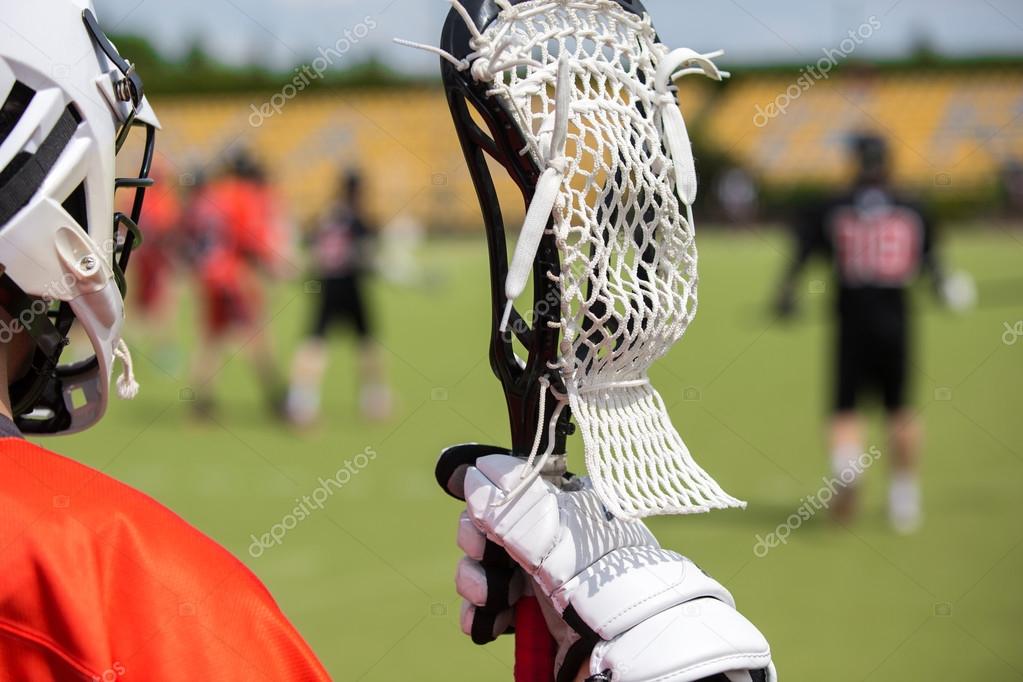 A contusion is when sudden force hits an area of the body causing the injured capillaries or blood vessels to leak blood into the hit area; a contusion is the technical term for a bruise. These are incredibly common in lacrosse because many players can be hit with the firm lacrosse ball, be checked or slashed with the lacrosse stick, or even have an opposing player cause a contusion.
A contusion is when sudden force hits an area of the body causing the injured capillaries or blood vessels to leak blood into the hit area; a contusion is the technical term for a bruise. These are incredibly common in lacrosse because many players can be hit with the firm lacrosse ball, be checked or slashed with the lacrosse stick, or even have an opposing player cause a contusion.
3. Wrist Fractures
A wrist fracture is another popular injury that happens on the lacrosse field. A wrist fracture is when the joint that connects the hand to the forearm has been compromised, due to a carpal bone or the distal radius (the larger bone in the wrist joint) breaking. These are common injuries because lacrosse is a contact sport and utilizes a metal stick as the primary piece of equipment. A lacrosse player may fracture their wrist if they fall on the field holding their stick, or if an opposing player misses the stick of the lacrosse and checks the players in the wrist.
4.
 Knee Sprains
Knee Sprains
A knee sprain is an injury that happens often during many contact field sports, including lacrosse. A knee sprain could either be a tear on the Medial Collateral Ligament (MCL) or the Anterior Cruciate Ligament (ACL). These tears are stretched or torn ligaments that connect the thigh bone to the shin bone. ACL or MCL injuries are incredibly painful and take months to rehabilitate and recover. They occur most often when a stick hits the leg from the side or if they fall in an awkward position.
5. Back Pain
Back pain is a popular injury that many lacrosse players suffer from. Back pain is discomfort on one’s back, and usually for lacrosse players, this discomfort stems on the lower half. Lacrosse players often get this injury from either a cross check from an opponent or from shooting. Players use their entire body to shoot the ball into the net, including their back muscles, causing them to cause major discomfort.
Lacrosse Injuries | Twin Boro Physical Therapy
Lacrosse is a sport that can cause injuries related to both the high level of contact, in addition to non-contact. Often played by children and high school athletes, as well as professionals, lacrosse provides a work out for the entire body, particularly the lower extremity as players are constantly running throughout the game.
Often played by children and high school athletes, as well as professionals, lacrosse provides a work out for the entire body, particularly the lower extremity as players are constantly running throughout the game.
Lacrosse players are typically prone to injuries that affect the lower extremity. This includes the ankle, knee, legs and hips. The most common lacrosse injuries affect the hamstring and quadriceps muscle groups. Muscle sprains and strains are common injuries, in addition to ligament injuries and skin conditions like abrasions. Ankle injuries account for 21% of female and 16% of male lacrosse-related conditions. Knee injuries, including ACL (anterior cruciate ligament) damage are the leading cause of lost practice and game time for lacrosse players.
Causes
- Non-contact injuries, which lead to ankle and knee sprains along with ACL injuries to the knee.
- Improper equipment, including protective gear like helmets or goggles
- Players who do not follow the rules
- Poor conditioning
- Inadequate warm-up prior to practice or a game
Risk Factors
There are intrinsic and extrinsic risk factors for injury. Intrinsic factors are a child’s individual musculoskeletal issues, which can include skeletal immaturity (bones and joints that are still developing) or muscle weakness. Extrinsic factors are the environment in which an athlete performs, which can include the level of competition: how much, how hard and how long play lasts.
Intrinsic factors are a child’s individual musculoskeletal issues, which can include skeletal immaturity (bones and joints that are still developing) or muscle weakness. Extrinsic factors are the environment in which an athlete performs, which can include the level of competition: how much, how hard and how long play lasts.
Other common risk factors for lacrosse injuries include:
- High contact, which is of a greater level in boys’ lacrosse than girls’ lacrosse
- Players who do not abide by the rules of the game
- Concussions caused by body-to-body or body-to-ground contract in boys’ games
- Injuries caused by an inadvertent stick or ball to the head (often during girls games)
- Altering equipment
Prevention
Proper instruction and supervision is a critical component to reducing lacrosse injuries for both boys and girls at all levels. Having the proper equipment and using it correctly can drastically cut down on the number of injuries in both practice and actual game settings.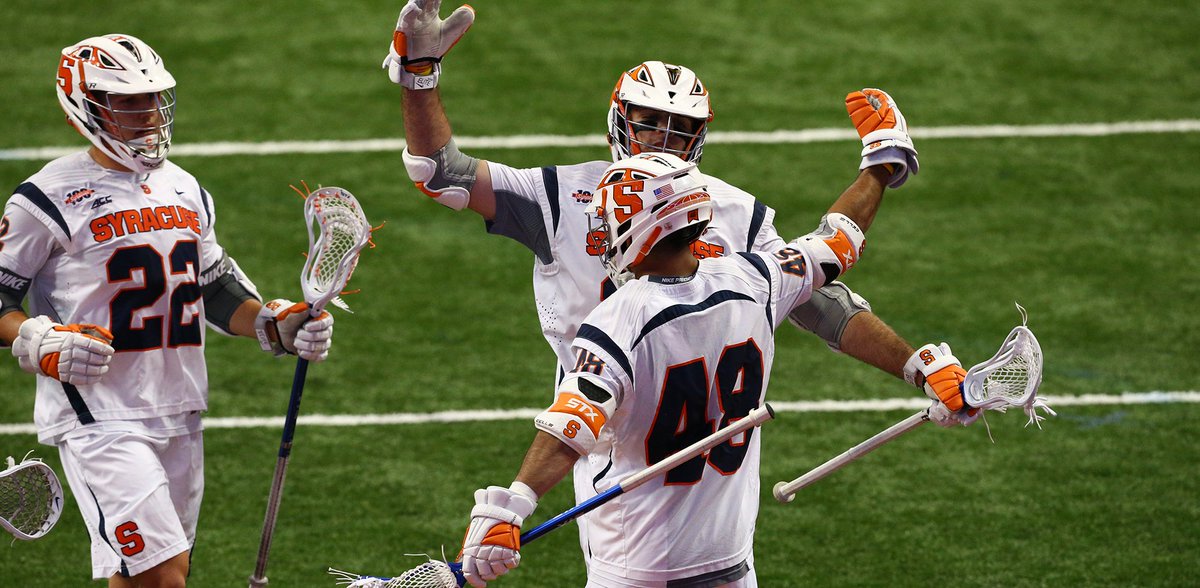
Other ways to avoid injury include:
- Boys and girls lacrosse differs in the level of contact allowed and the equipment worn, therefore sports related injuries vary.
- Girls’ equipment includes protective goggles and mouthpieces, while soft headgear and lightweight gloves are optional.
- Boys’ equipment includes the mandatory use of helmets with full-face guards, shoulder pads, padded gloves, and mouthpieces. Elbow pads and protective genital cups are suggested.
- Following the rules of the game that stress finesse and skill over unprotected hits in the boys’ game and allowing free style play in the girls’ game.
- Consulting a sports health professional such as a sports physical therapist for the establishment and implementation of a conditioning program.
- Institution of a warm-up program that can include exercises to decrease the incidence of non-contact injuries.
- An emergency plan should be in place to care for sports related injuries.

Facts
Did you know that Lacrosse is one of the fastest growing sports in the United States?
Did you know that Lacrosse is the oldest team sport in the United States? It was first played by Native Americans?
Common Conditions
Ankle sprains
Knee sprains
Anterior cruciate ligament (ACL) knee injuries
Hamstring strain
Quadriceps strain
Groin strains
Muscle strains
Shin splints
Abrasions
Schedule an
Appointment!
Thank you for choosing Twin Boro! We pride ourselves in our ability to respond to your inquiries as quickly as possible.
Please complete the form below and someone will be in touch within 24 hours to schedule your desired appointment within the next 24-48 hours.
Review of Lacrosse-Related Musculoskeletal Injuries in High School and Collegiate Players
Sports Health. 2015 Sep; 7(5): 448–451.
, PhD, FACSM,*†, ATC,† and , MD, PhD, FACSM†
Heather K. Vincent
†Department of Orthopaedics and Rehabilitation, Divisions of Research and Physical Medicine, Interdisciplinary Center for Musculoskeletal Training and Research, University of Florida, Gainesville, Florida
Laura Ann Zdziarski
†Department of Orthopaedics and Rehabilitation, Divisions of Research and Physical Medicine, Interdisciplinary Center for Musculoskeletal Training and Research, University of Florida, Gainesville, Florida
Kevin R. Vincent
†Department of Orthopaedics and Rehabilitation, Divisions of Research and Physical Medicine, Interdisciplinary Center for Musculoskeletal Training and Research, University of Florida, Gainesville, Florida
†Department of Orthopaedics and Rehabilitation, Divisions of Research and Physical Medicine, Interdisciplinary Center for Musculoskeletal Training and Research, University of Florida, Gainesville, Florida
*Heather K. Vincent, PhD, FACSM, Department of Orthopedics and Rehabilitation, Division of Research, UF Orthopaedics and Sports Medicine Institute (OSMI), PO Box 112727, Gainesville, FL 32611 (e-mail: ude.lfu.ohtro@khecniv).This article has been cited by other articles in PMC.
Vincent, PhD, FACSM, Department of Orthopedics and Rehabilitation, Division of Research, UF Orthopaedics and Sports Medicine Institute (OSMI), PO Box 112727, Gainesville, FL 32611 (e-mail: ude.lfu.ohtro@khecniv).This article has been cited by other articles in PMC.
Abstract
Context:
Participation in lacrosse has dramatically increased since 2001. Changes in the game rules, sport equipment, and athlete characteristics have all contributed to the injury patterns in lacrosse over time.
Objective:
A summary of lacrosse-related musculoskeletal injuries.
Data Sources:
Medline, CINAHL, Scopus, and Web of Science were searched for articles relating to the epidemiology and mechanisms of lacrosse injuries in high school and collegiate lacrosse players.
Study Selection:
The search strategy used the following keywords: lacrosse, injury, musculoskeletal, high school, intercollegiate, knee, shoulder, fracture, ankle, foot, concussion, and surveillance.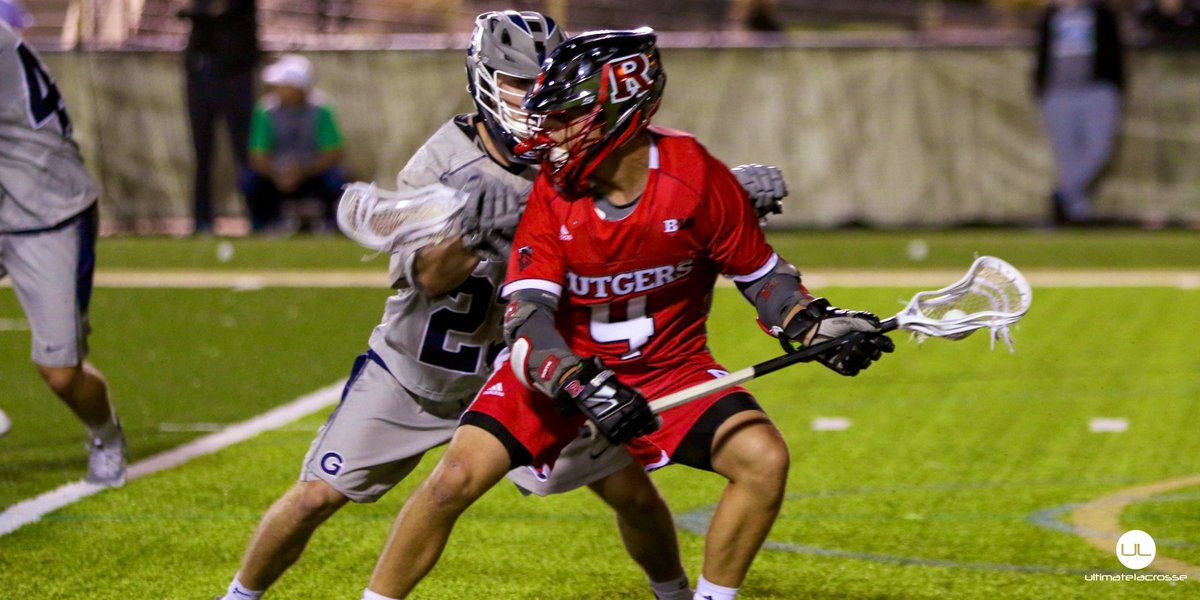 Studies were included if they reported injury risk, injury type, or injury mechanism in high school or collegiate lacrosse players.
Studies were included if they reported injury risk, injury type, or injury mechanism in high school or collegiate lacrosse players.
Study Design:
Systematic review.
Level of Evidence:
Level 4.
Data extraction:
Injury type, frequency, and mechanism as well as population were extracted.
Results:
Thirteen cohort studies and an additional 15 case series and reports were included. For all lacrosse players, ankle, knee, and hand/wrist were key sites for acute injury. Among collegiate players, preseasonal play elicits more injuries than seasonal play. Female players incur more noncontact and overuse injuries than male players. Boys have 3 to 5 times the risk for sustaining a fracture compared with girls in competition and practice. Women experienced fewer concussions but more facial fractures than men. Injuries to the foot/ankle, head, face, and wrist/hand more often required surgery in girls than in boys.
Conclusion:
Male players incur more injuries than female players.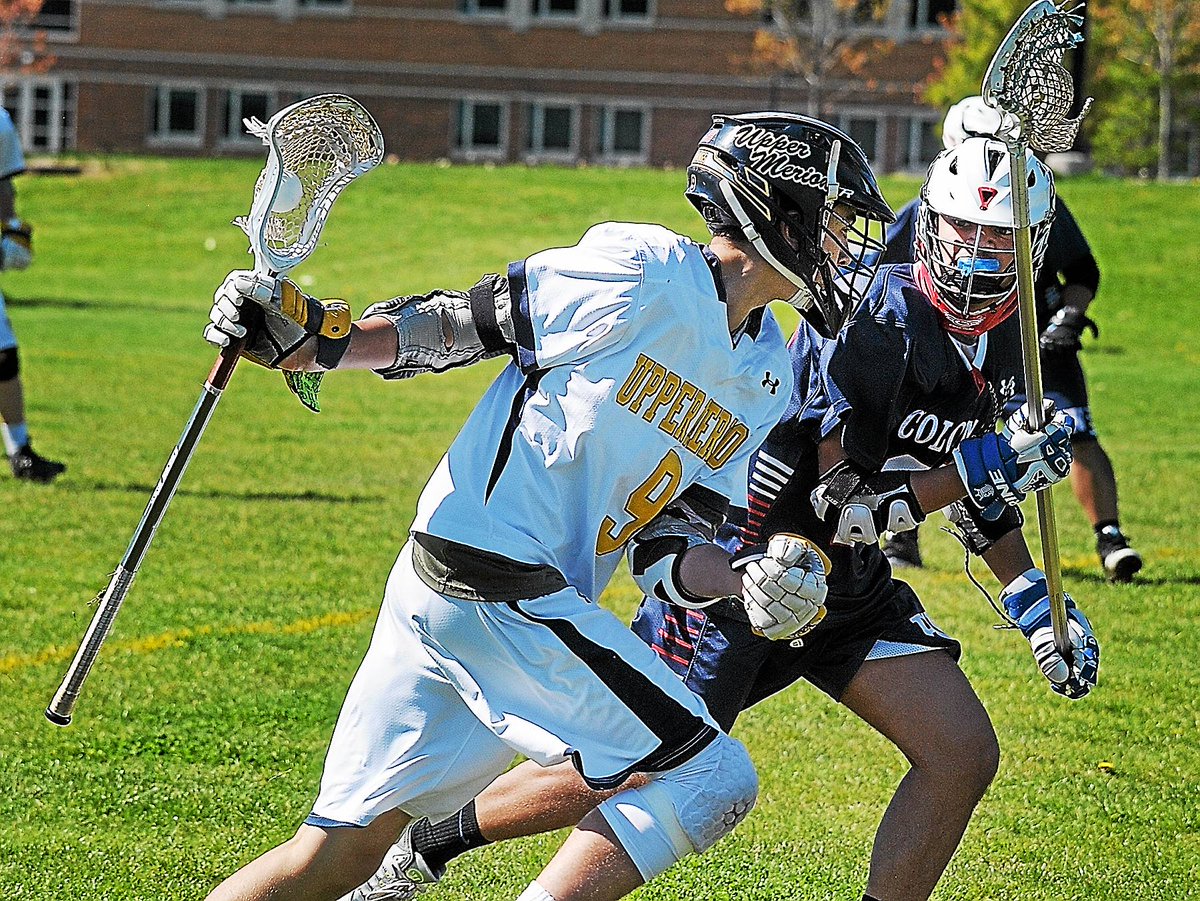 However, because of the collisional nature of play, more shoulder, arm, and upper leg injuries occur in male players. Fractures to the head and hand occur relatively more frequently in female players. Injury risk can be modified with appropriate training regimens and by respecting the game rules.
However, because of the collisional nature of play, more shoulder, arm, and upper leg injuries occur in male players. Fractures to the head and hand occur relatively more frequently in female players. Injury risk can be modified with appropriate training regimens and by respecting the game rules.
Keywords: lacrosse, injury, knee, ankle, fracture
US Lacrosse is the national governing body for both women’s and men’s lacrosse. National participation in lacrosse continues to increase rapidly. Participation surveys conducted by US Lacrosse revealed that there was a 10% growth in the sport from 2009 to 2010, with a total of 624,593 players competing on organized teams in the United States.17 This is a dramatic increase in the number of lacrosse players from 2001, with initial tracking numbers indicating 253,931 competitive players. The youth lacrosse contingent has expanded rapidly from 220,797 boys and girls in 2006 to 351,275 in 2011. From 2006 to 2010, the national participation in high school lacrosse increased by 12.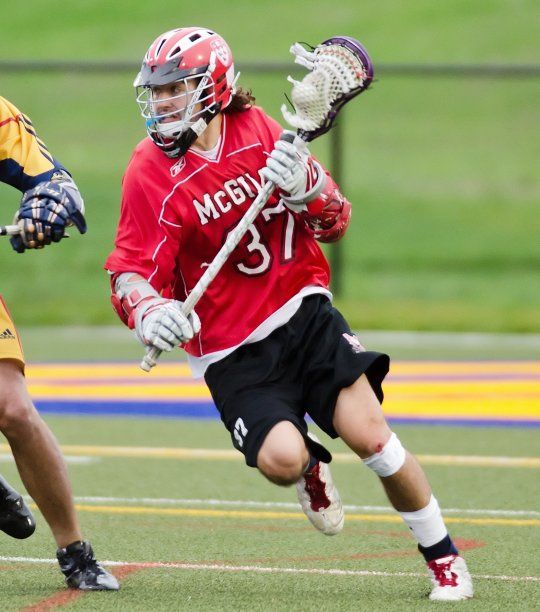 2%, reaching 255,314 players by 2010. The National Collegiate Athletic Association (NCAA) reported that men’s lacrosse experienced an 18% net gain in the number of teams from 2010 to 201128 and an increase in the number of athletes from 6551 to 10,903 from 2001 to 2012.29 Women’s lacrosse has also quickly grown. The number of female athletes increased from 5326 to 8482 from 2001 to 2012.29
2%, reaching 255,314 players by 2010. The National Collegiate Athletic Association (NCAA) reported that men’s lacrosse experienced an 18% net gain in the number of teams from 2010 to 201128 and an increase in the number of athletes from 6551 to 10,903 from 2001 to 2012.29 Women’s lacrosse has also quickly grown. The number of female athletes increased from 5326 to 8482 from 2001 to 2012.29
The explosive growth of the sport has caused an infusion of novice players with varying levels of skill. This growth, particularly in youth and high school lacrosse programs, may not be consistently matched with experienced, knowledgeable coaching and refereeing resources. As lacrosse game rules evolve and equipment properties change, the pattern of musculoskeletal injuries may change. The nature of the lacrosse game involves unique physical challenges that can result in overuse and acute injuries. The combination of the physical stressors and variance in skill level can create a playing environment conducive to injury.
Data are too few in the youth lacrosse or box lacrosse contingents about which conclusions can be developed. The scant evidence from 1 study shows that most injuries are relatively minor in boys and girls, and only a few severe injuries occurred.20 Thus, as most of the musculoskeletal injuries occur in players older than 14 years, this review will present the available data from male and female high school and collegiate lacrosse athletes.
Methods
We conducted a literature search from 1965 to March of 2014 in Medline, CINAHL, Scopus, and Web of Science. The search strategy identified studies in English with MeSH/keywords with all subheadings and free text, including lacrosse, injury, musculoskeletal, high school, intercollegiate, knee, shoulder, fracture, ankle, foot, concussion, and surveillance. Studies were included if they reported injury risk, injury type, or injury mechanism in high school or collegiate lacrosse players. A total of 715 abstracts were retrieved and reviewed by the authors to determine whether the study met the criteria. Over 15 case reports and additional studies of lacrosse-related injuries were included to help provide insight on the mechanism of injury and positional injury risk. The lists of references of retrieved publications were manually checked to add any citations missed by the electronic searches. A total of 13 studies were included in this review ().
Over 15 case reports and additional studies of lacrosse-related injuries were included to help provide insight on the mechanism of injury and positional injury risk. The lists of references of retrieved publications were manually checked to add any citations missed by the electronic searches. A total of 13 studies were included in this review ().
Study inclusion flow diagram.
Nature of the Current Evidence
Data were primarily derived from public high school reporting studies,12,18 surveillance systems,33,34,36 injury updates26 or video review of game play.4,9 The majority of the evidence is epidemiologic, with additional case reports and series of specific injury mechanisms.1,10,14-16,22,24,30,31,35 One cross-sectional study examined lacrosse injuries in persons 4 to 59 years old but fell outside the high school and collegiate classifications.6 A reportable injury is one that occurred as a result of participation in an organized team activity (practice, competition) and required medical attention by an athletic trainer or physician and caused the athlete to miss lacrosse participation for 1 or more days. Injury documentation was obtained primarily from on-site athletic trainers.
Injury documentation was obtained primarily from on-site athletic trainers.
Boys’ and Men’s Injuries
A full description of injuries incurred is available in Appendices 1 and 2 (available at http://sph.sagepub.com/content/suppl).
Boys’ High School and Collegiate Populations
Studies from public school systems and regional camps show that the overall injury rate is slightly higher in boys than girls, with 2.89 versus 2.54 injuries per 1000 athlete-exposures (AEs).12 Boys have a 3 times higher game-to-practice injury ratio than girls during seasonal play.12 Boys are also more likely to sustain injuries to the shoulder, arm, and upper leg than girls.12,36
Upper Extremity Injury and Shoulder Instability
Boys have twice the proportion of serious elbow injuries (requiring emergency care in the hospital) and 5 times the proportion of serious shoulder injuries than girls.36 Interestingly, the absolute injury rate is relatively low for elbow injury or pathology, even with a long lever arm. Key rotations in the lacrosse throwing motion are largely dependent on rotations at the pelvis, upper torso, and shoulder and not the elbow.32,37 The percentage of boys and men who experience shoulder injuries ranges from 5% to 12.4%.8,12 Emergent injuries to the shoulder are 5 times more common in boys than girls.36 Interestingly, the prevalence of shoulder injuries increases in parallel with the level of contact and amount of protective equipment.36
Key rotations in the lacrosse throwing motion are largely dependent on rotations at the pelvis, upper torso, and shoulder and not the elbow.32,37 The percentage of boys and men who experience shoulder injuries ranges from 5% to 12.4%.8,12 Emergent injuries to the shoulder are 5 times more common in boys than girls.36 Interestingly, the prevalence of shoulder injuries increases in parallel with the level of contact and amount of protective equipment.36
Knee and Hip Injuries
Boys incurred similar anterior cruciate ligament injury rates as girls (0.79 vs 0.78), but lower meniscal injury rates (0.44 vs 0.61) and higher medial collateral ligament injury rates (0.76 vs 0.29).33 The rate of knee injuries is higher in summer camps, where there is an intense volume of activity.12 Lacrosse players had the highest percentage of knee injuries requiring surgical repair before return to play compared with other contact and noncontact sports. 33 Hip injuries in lacrosse players are relatively rare26 and occur in low frequencies (3.3-5.6 per 1000 AEs).8
33 Hip injuries in lacrosse players are relatively rare26 and occur in low frequencies (3.3-5.6 per 1000 AEs).8
Ankle Injuries
Boys are 1.4 times more likely to sustain ankle injury than girls during summer camp.12 The NCAA Surveillance System found that ankle ligament sprains comprise 14.4% of the total injuries reported for men’s lacrosse.
Fractures
Compared with girls, the overall fracture rate is higher in boys irrespective of the nature of the AE, and 17.2% of these fractures required surgery.34 A total of 69.3% of fracture injuries requiring surgical repair included hand/finger, lower leg, nose, ankle, and forearm.34 After ligament sprains, fractures were the second most common diagnosis requiring surgery in high school athletes.34 Some evidence indicates that increasing age is inversely related to the proportion of fractures in injured players.34 Body mass index has not been found to be related to fracture incidence. 34 Irrespective of player position, high speed lacrosse ball impact can strike the throat and cause displaced transcricoid fracture.10 Newer helmet designs have begun to incorporate longer chin protectors that may offer more protection of the throat but reduce forward flexion of the neck.
34 Irrespective of player position, high speed lacrosse ball impact can strike the throat and cause displaced transcricoid fracture.10 Newer helmet designs have begun to incorporate longer chin protectors that may offer more protection of the throat but reduce forward flexion of the neck.
Concussion
The incidence of concussions in boys lacrosse has increased considerably from 1998 to 2008, with a rate of 0.1 concussions per 1000 AEs in 1998 up to 0.6 in 2008, which corresponds to an annual increase by 16.5%.18 Lacrosse concussion rates are second only to boys’ football.18 Helmets alone do not always protect against concussion injury.3,8
Girls’ and Women’s Injuries
Girls and women are not permitted to make body contact with another player, but may check (defined as “an attempt to dislodge the ball from an opponent’s stick by using controlled stick-to-stick contact”)32 the opponent’s stick with their own only when the 1 player has possession of the ball. No additional stick-to-stick contact is permitted. In girls’ lacrosse, the goalie is also required to wear a padded/protective girdle and shin guards. The last major difference between the male and female play of lacrosse is penalties or fouls. In girls’/women’s lacrosse, when a penalty or foul is called by the referee, all players on the field must stop instantly.
No additional stick-to-stick contact is permitted. In girls’ lacrosse, the goalie is also required to wear a padded/protective girdle and shin guards. The last major difference between the male and female play of lacrosse is penalties or fouls. In girls’/women’s lacrosse, when a penalty or foul is called by the referee, all players on the field must stop instantly.
Girls’ High School and Collegiate Populations
A summary of the injuries reported is available in Appendices 1 and 2 (available at http://sph.sagepub.com/content/suppl). The only protective gear women and girls wear are goggles and mouth guards. Overall, the injury patterns differ from the boys in several respects. A total of 12.8% and 32.5% of the injuries occurred within the goal area and within the goal’s 8-meter arc, respectively.7 At the time of the injury, 69.7% of women were handling the ball and/or were in loose ball scenarios.7
Upper Extremity and Shoulder Injuries
Girls and women do have lower rates of injury to the shoulders and arm during competition and practice, with frequencies of these injuries ranging from 1. 6% to 4.1% of the total injuries reported.12 Emergent shoulder injuries occur 5 times less in girls than boys, and fewer of these injuries were fractures.
6% to 4.1% of the total injuries reported.12 Emergent shoulder injuries occur 5 times less in girls than boys, and fewer of these injuries were fractures.
Lower Extremity Injuries
During regular-season play, girls have higher rates of knee injuries than boys.12 During summer camp play, the primary injury types for girls were overuse (19% of total injuries), illegal stick/object hit (19%), ball contact with the body (15%), and falling to the ground with or without body contact (24%)12; 39.3% of lacrosse players with knee injuries required surgery, second only to cheerleading at 40%.33 Surgery was required for meniscus (22%) and ligament (65.4%) injuries to the knee. The NCAA Surveillance System data from 15 sports revealed that anterior cruciate ligament injuries comprised 4.3% of all injuries in women’s lacrosse.13 Women experience relatively low rates of hip and pelvis muscle-tendon strain compared with other lower extremity joints (2.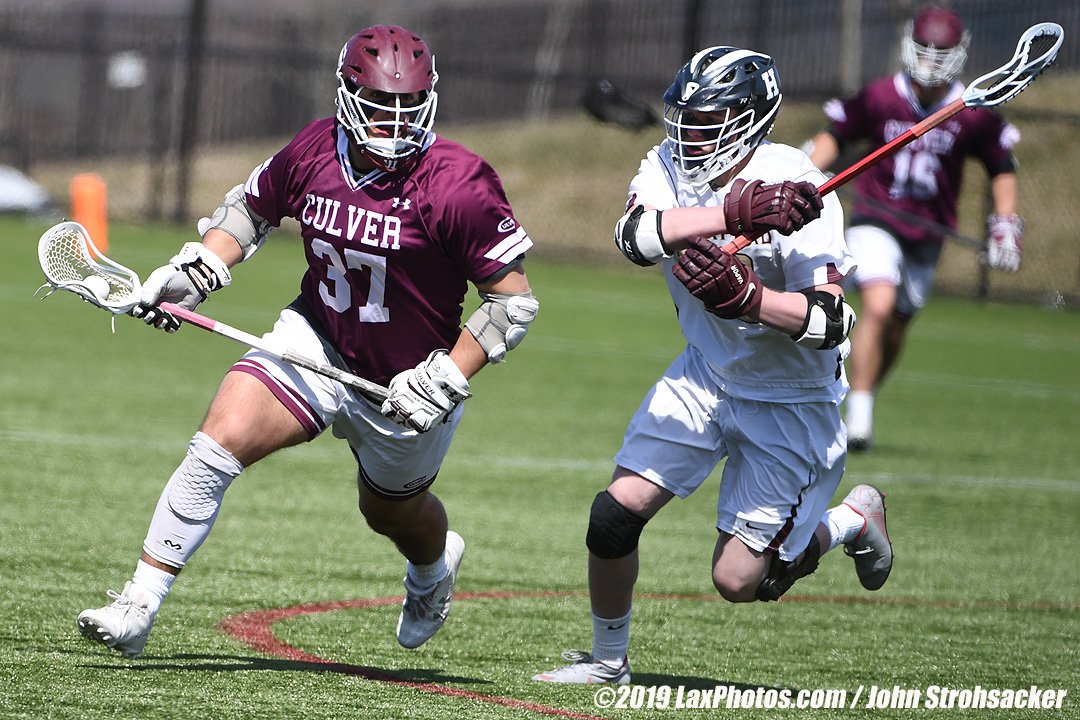 3% to 5.0% in practices and games).7 Ankle injuries comprise 15% to 25.1%12,25 of total injuries in girls and women.
3% to 5.0% in practices and games).7 Ankle injuries comprise 15% to 25.1%12,25 of total injuries in girls and women.
Fractures
The hand/wrist is the most commonly fractured site in girls’ lacrosse.34 Boys and men incur head or facial fractures at a frequency of 3% to 3.5% of all head injuries, whereas girls and women incur higher fracture frequencies of 14.0% to 20.9% of all head injuries.19
Head Injuries and Concussions
Evidence from district-mandated electronic medical records indicates concussion injury is increasing in girls similar to that in boys.18 Interestingly, girls have higher rates of head injuries than boys,12 but the overall concussion incidence is lower in girls than in boys. Data from the Consumer Product Safety Commission’s National Electronic Injury Surveillance System showed that female players in general had a greater percentage of head and face injuries than male players (30. 1% vs 18.0%, respectively).6 Importantly, the incidence of head injuries is greater in varsity high school players compared with junior varsity.4
1% vs 18.0%, respectively).6 Importantly, the incidence of head injuries is greater in varsity high school players compared with junior varsity.4
Positional Differences in Injury Risk
Goalies
Hand grip on the stick may expose the thumbs to injury.9 An extremely rare injury is commotio cordis.23 Adolescents are more likely to experience this injury, where it can happen with a low-velocity impact.23 Commotio cordis has occurred in midfielders as well as goalies wearing proper chest protection.23
Defensemen
There has not yet been a rigorous analysis of position-specific musculoskeletal injuries in lacrosse defenders.
Attack and Midfielders
Up to 52.5% of hand and finger injuries in men’s and women’s lacrosse were caused by offensive stick hits, and 42.7% to 59.4% of injuries occurred in the thumb.2 Early data of a small cohort indicated that 28% of attackmen who attended a summer league incurred acromioclavicular joint dislocations and clavicular fractures in attackers.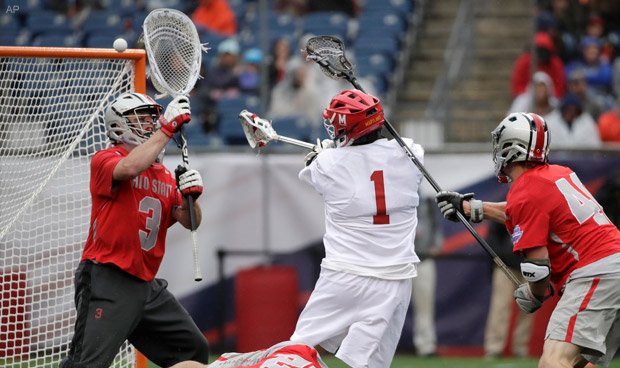 31
31
Conclusion
Male players incur a greater number of injuries than female players, but the prevalence and type of injuries differ. Because of contact, more shoulder, arm, and upper leg injuries occur in male players, and more fractures to the head and hand occur in female players. Common injury sites for lacrosse players in all age groups and sexes include the ankle, knee, and hand/wrist. Injury risk can be modified with appropriate training protocols and with respect of the rules of play.
Footnotes
The authors report no potential conflicts of interest in the development and publication of this article.
References
1.
Attia MW, Russell J.
Isolated first rib fracture in a high school lacrosse player. Pediatr Emerg Care. 2010;16:31-32. [PubMed] [Google Scholar]2.
Bowers AL, Horneff JG, Baldwin KD, Huffman GR, Sennett BJ.
Thumb injuries in intercollegiate men’s lacrosse. Am J Sports Med. 2010;38:527-531. [PubMed] [Google Scholar]4.
Caswell SV, Lincoln AE, Almquist JL, Dunn RE, Hinton RY.
Video incident analysis of head injuries in high school girls’ lacrosse. Am J Sports Med. 2012;40:756-762. [PubMed] [Google Scholar]6.
Diamond PT, Gale SD.
Head injuries in men’s and women’s lacrosse: a 10 year analysis of the NEISS database. National Electronic Injury Surveillance System. Brain Inj. 2001;15:537-544. [PubMed] [Google Scholar]7.
Dick R, Lincoln AE, Agel J, Carter EA, Marshall SW, Hinton RY.
Descriptive epidemiology of collegiate women’s lacrosse injuries: National Collegiate Athletic Association Injury Surveillance System, 1988-1989 through 2003-2004. J Athl Train. 2007;42:262-269. [PMC free article] [PubMed] [Google Scholar]8.
Dick R, Romani WA, Agel J, Case JG, Marshall SW.
Descriptive epidemiology of collegiate men’s lacrosse injuries: National Collegiate Athletic Association Injury Surveillance System, 1988-1989 through 2003-2004. J Athl Train. 2007;42:255-261. [PMC free article] [PubMed] [Google Scholar]9.
Elkousy HA, Janssen H, Ferraro J, Levin LS, Speer K.
Lacrosse goalkeeper’s thumb. A preventable injury. Am J Sports Med. 2000;28:317-321. [PubMed] [Google Scholar]10.
A preventable injury. Am J Sports Med. 2000;28:317-321. [PubMed] [Google Scholar]10.
French C, Kelley R.
Laryngeal fractures in lacrosse due to high speed ball impact. J Am Med Assoc Otol Head Neck Surg. 2013;139:735-738. [PubMed] [Google Scholar]11.
Hall C, Friel K, Dong M, et al.
Epidemiology of injuries in the elite level female high school lacrosse player. Res Sports Med. 2013;21:229-239. [PubMed] [Google Scholar]12.
Hinton RY, Lincoln AE, Almquist JL, Douoguih WA, Sharma KM.
Epidemiology of lacrosse injuries in high school-aged girls and boys: a 3-year prospective study. Am J Sports Med. 2005;33:1305-1314. [PubMed] [Google Scholar]13.
Hootman JM, Dick R, Agel J.
Epidemiology of collegiate injuries for 15 sports: summary and recommendations for injury prevention initiatives. J Athl Train. 2007;42:311-319. [PMC free article] [PubMed] [Google Scholar]14.
Hutchinson PH, Stieber J, Flynn J, Ganley T.
Complete and incomplete femoral stress fractures in the adolescent athlete. Orthopaedics.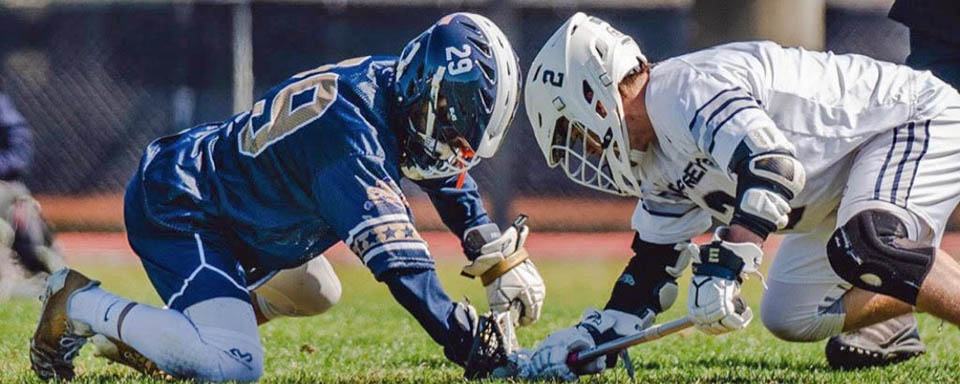 2008;31:604. [PubMed] [Google Scholar]15.
2008;31:604. [PubMed] [Google Scholar]15.
Kang L, Belcher D, Hulstyn MJ.
Stress fractures of the femoral shaft in women’s college lacrosse: a report of seven cases and a review of the literature. Br J Sports Med. 2005;39:902-906. [PMC free article] [PubMed] [Google Scholar]18.
Lincoln AE, Caswell SV, Almquist JL, Dunn RE, Norris JB, Hinton RY.
Trends in concussion incidence in high school sports: a prospective 11-year study. Am J Sports Med. 2011;39:958-963. [PubMed] [Google Scholar]19.
Lincoln AE, Hinton RY, Almquist JL, Lager SL, Dick RW.
Head, face and eye injuries in scholastic and collegiate lacrosse. Am J Sports Med. 2007;35:207-215. [PubMed] [Google Scholar]20.
Lincoln AE, Yeger-McKeever M, Romani W, Hepburn LR, Dunn RE, Hinton RY.
Rate of injury among youth lacrosse players. Clin J Sports Med. 2014;24:355-357. [PubMed] [Google Scholar]21.
Marar M, McIlvain NM, Fields SK, Comstock RD.
Epidemiology of concussions among United States high school athletes in 20 sports. Am J Sports Med. 2012;40:747-755. [PubMed] [Google Scholar]22.
2012;40:747-755. [PubMed] [Google Scholar]22.
Marchant MHJ, Gambardella RA, Podesta L.
Superficial radial nerve injury after avulsion fracture of the brachioradialis muscle origin in a professional lacrosse player: a case report. J Shoulder Elbow Surg. 2009;18:e9-e12. [PubMed] [Google Scholar]23.
Maron BJ, Doerer JJ, Haas TS, Estes NA, Hodges JS, Link MS.
Commotio cordis and the epidemiology of sudden death in competitive lacrosse. Pediatrics. 2009;124:966-971. [PubMed] [Google Scholar]24.
Matich AJ, Petron DJ, Merrell SW, Macintyre JG.
Bilateral lower leg pain in a female collegiate lacrosse player. Curr Sports Med Rep. 2009;8:315-317. [PubMed] [Google Scholar]25.
Matz SO, Nibbelink G.
Injuries in intercollegiate women’s lacrosse. Am J Sports Med. 2004;32:608-611. [PubMed] [Google Scholar]26.
McCulloch PC, Bach BR., Jr
Injuries in men’s lacrosse. Orthopaedics. 2007;30:29-34. [PubMed] [Google Scholar]27.
Mihata LC, Beutler AI, Boden BP.
Comparing the incidence of anterior cruciate ligament injury in collegiate lacrosse, soccer, and basketball players: implications for anterior cruciate ligament mechanism and prevention. Am J Sports Med. 2006;34:899-904. [PubMed] [Google Scholar]30.
Am J Sports Med. 2006;34:899-904. [PubMed] [Google Scholar]30.
O’Neill PJ, Cosgarea AJ, McFarland EG.
Unusual double clavicle fracture in a lacrosse player. Clin J Sports Med. 2000;10:69-71. [PubMed] [Google Scholar]31.
Silloway KA, McLaughlin RE, Edlich RC, Edlich RF.
Clavicular fractures and acromioclavicular joint dislocations in lacrosse: preventable injuries. J Emerg Med. 1985;3:117-121. [PubMed] [Google Scholar]32.
Slater CD, Chen C, Zdziarski LA, et al.
Kinematic characterization of lacrosse shooting motions of the dominant and non-dominant side. Med Sci Sport Exerc. 2014;46:S408. [Google Scholar]33.
Swenson DM, Collins CL, Best TM, Flanigan DC, Fields SK, Comstock RD.
Epidemiology of knee injuries among U.S. high school athletes, 2005/2006-2010/2011. Med Sci Sport Exerc. 2013;45:462-469. [PMC free article] [PubMed] [Google Scholar]34.
Swenson DM, Henke NM, Collins CL, Fields SK, Comstock RD.
Epidemiology of United States high school sports-related fractures, 2008-09 to 2010-11. Am J Sports Med. 2012;40:2078-2084. [PMC free article] [PubMed] [Google Scholar]35.
Am J Sports Med. 2012;40:2078-2084. [PMC free article] [PubMed] [Google Scholar]35.
Wild AT, Begly JP, Garzon-Muvdi J, Desai P, McFarland EG.
First-rib stress fracture in a high-school lacrosse player: a case report and short clinical review. Sports Health. 2011;3:547-549. [PMC free article] [PubMed] [Google Scholar]36.
Yard EE, Comstock RD.
Injuries sustained by pediatric ice hockey, lacrosse, and field hockey athletes presenting to United States emergency departments, 1990-2003. J Athl Train. 2006;41:441-449. [PMC free article] [PubMed] [Google Scholar]37.
Zdziarski LA, Chen C, Slater CD, et al.
Dominant versus non-dominant lacrosse throw sex differences: a potential for injury?
Med Sci Sport Exerc. Annual Meeting 2014; May 27-31, 2014, Orlando, FL. [Google Scholar]
Epidemiology of Injuries in Women’s Lacrosse: Implications for Sport-, Level-, and Sex-Specific Injury Prevention Strategies
Objective:
By the end of 2013, the United States had an estimated 278 000 female lacrosse players, with half of those participating at the youth level.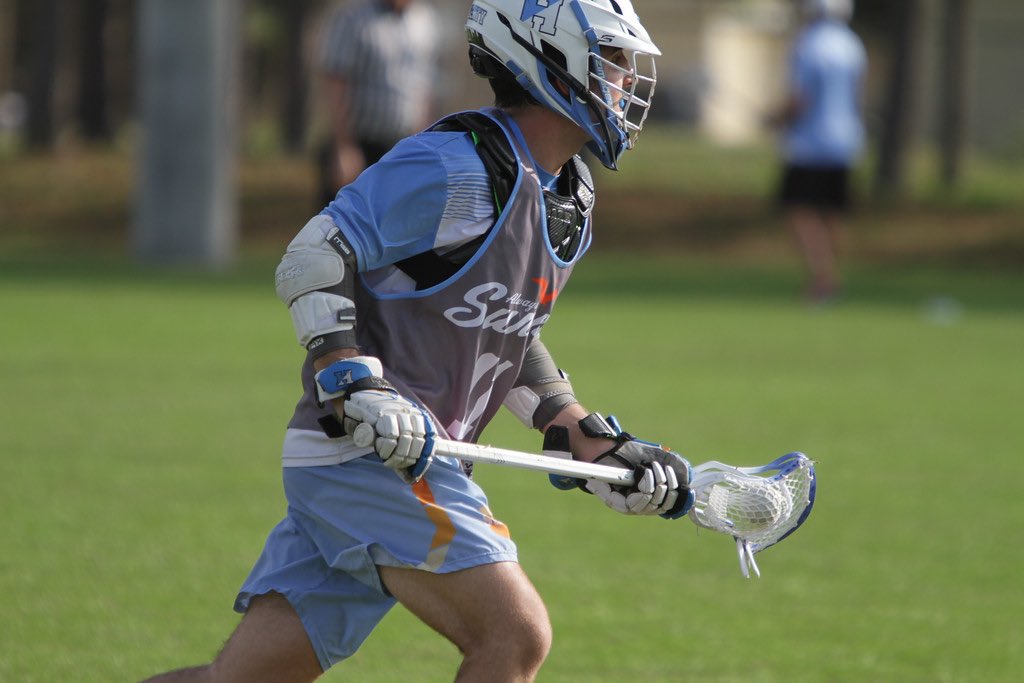 The effects of the sport’s rapid growth on injury rates have yet to be determined. The purpose of this clinical review is to synthesize the available published data on injuries that have occurred in the sport of women’s lacrosse. Of particular interest was the risk of injury based on the level of play and position.
The effects of the sport’s rapid growth on injury rates have yet to be determined. The purpose of this clinical review is to synthesize the available published data on injuries that have occurred in the sport of women’s lacrosse. Of particular interest was the risk of injury based on the level of play and position.
Data sources:
A comprehensive literature search was performed in PubMed, High Wire Press, SPORTDiscus, Google Scholar, and Ovid using the keywords “Lacrosse Injuries,” “Epidemiology Lacrosse Injuries,” “Lacrosse Injury,” “Lacrosse,” and “Injury.”
Study selection:
The electronic search included material published during or after 1950. In addition, all bibliographies of electronically found sources were cross-referenced to identify any additional publications that were not produced in the electronic searches.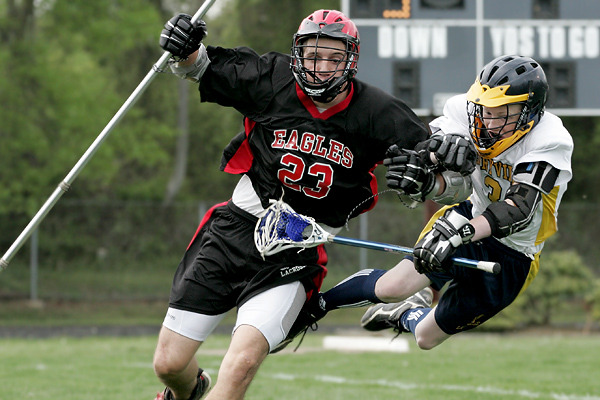
Data extraction:
All articles with data on women’s injury rates were categorized by overall injury rates, rates by session (competition vs practice), nature of injury, location, type, severity, and player position.
Data synthesis:
Injury rates increase with age: from youth leagues to high school and finally to the collegiate level. Rates of injury varied from 0.03 to 3.9 injuries/100 athletes. Women’s game injury rates are consistently higher than practice injury rates (ranging from 0.2 to 7.1 vs 0.01 to 3.3). Injuries occur most frequently from stick-to-player or player-to-ball contact, rather than player-to-player contact. Women sustain a higher percentage of head and facial injuries relative to male lacrosse players. The most common types of injuries for women are concussions, sprains, contusions, and lacerations. More than half of all injuries are in the mild category resulting in players missing practice and games for 1 to 7 days. Offensive players had the most injuries, followed by defensive players and then midfielders, with goalies having the fewest number of injuries.
More than half of all injuries are in the mild category resulting in players missing practice and games for 1 to 7 days. Offensive players had the most injuries, followed by defensive players and then midfielders, with goalies having the fewest number of injuries.
Conclusions:
In women’s lacrosse, the rules and equipment used are substantially different than for the men’s game. Face and hand injuries are more prevalent for women when compared with men, and ankle injuries are most prevalent in female youth. Medical professionals who treat lacrosse players can benefit from an improved understanding of the types and rates of the injuries they are likely to encounter. Improved awareness of lacrosse-specific injuries can assist these professionals to be more prepared to treat these athletes, which may lead to improved care and outcomes.
Lacrosse – Active & Safe
Talk to your coaches, teachers, organization, or school about the prevention strategies below and how they might be incorporated into training and policies.
Strength Training and Neuromuscular Training Program
The risk of all lower body injuries may be reduced by up to 50% by regular participation in a balance training exercise program with a resistance training component, such as a neuromuscular training warm-up program. Completing this warm-up program can lower the likelihood of ankle and knee injuries.
Sport Injury Prevention Research Centre Neuromuscular Training
The Sport Injury Prevention Research Centre has developed a neuromuscular training warm-up program that can be adapted to many sports. Incorporating a warm-up program like this one into your training program at least two times per week has been associated with a significant reduction in lower body injuries.
Click here to view poster.
Oslo Sport Trauma Research Centre Neuromuscular Training
Adopt strength training exercises designed to prevent injuries to the shoulder and back.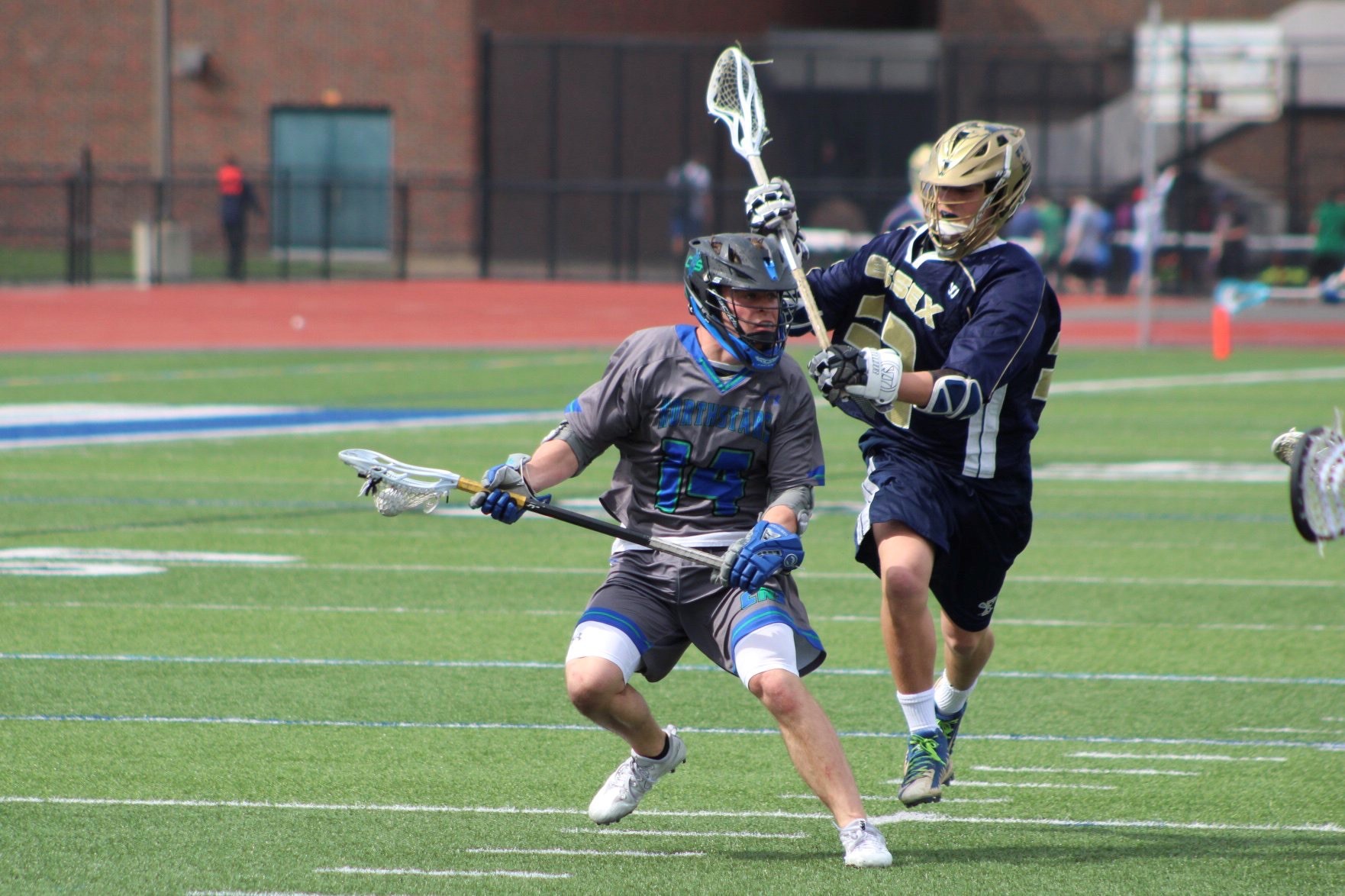 The Oslo Sport Trauma Research Centre has developed exercises that specifically help keep the shoulder strong and reduce the risk of shoulder and back injuries. This resource includes videos and PDFs for download.
The Oslo Sport Trauma Research Centre has developed exercises that specifically help keep the shoulder strong and reduce the risk of shoulder and back injuries. This resource includes videos and PDFs for download.
Learn more about exercises to help prevent shoulder injuries.
Learn more about exercises to help prevent back injuries.
For more exercises, visit http://fittoplay.org/.
Equipment
The risk of injury can be reduced by the use of properly fitted personal protective devices, such as mouthguards, eyewear, and helmets. Ensure players check equipment regularly for cracks or other signs of damage.
Managing Concussion
While concussions are not the most common injury in lacrosse, it is important to be aware of concussion signs and symptoms and know what to do if concussion is suspected. The Concussion Awareness Training Tool (CATT) is an online resource to learn more about how to recognize, prevent, and manage a concussion. CATT also includes resources on how to respond to a potential concussion situation, as well as detailed Return to School and Return to Sport protocol.
CATT also includes resources on how to respond to a potential concussion situation, as well as detailed Return to School and Return to Sport protocol.
Other Considerations (about this section)
Education
Support the use of warm-up and exercise programs specifically designed to decrease the risk of lower extremity injury. Facilitating a regular pre-season coaches’ workshop can improve understanding and confidence in using these programs. Supporting coaches in identifying and overcoming specific barriers (such as time constraints) can increase the likelihood of widespread adoption.
Facilities
The Ontario Physical Education Association (OPHEA) provides recommendations for safely implementing lacrosse in elementary schools.
Learn more about implementing field lacrosse or inter (soft) lacrosse in elementary schools
Lacrosse Resources
US Lacrosse provides information on:
Sport-related Physicals
Lacrosse is a physically demanding sport and some pre-existing conditions may increase the risk of injury. A sport-related physical evaluation at the beginning of each season ensuring fitness to play can help to reduce risk of injury. KidsHealth provides information about what sports physicals are, why they may be appropriate and where you may go to get them.
Learn more about Kids Health Sports Physicals.
How Lacrosse Players Can Prevent the Most Common LAX Injuries
We all play different sports because they’re fun, which is why everyone hates being sidelined with an injury. There are tons of health benefits to playing lacrosse, but players also need to be sure they take care of their bodies so injuries can be avoided as much as possible.
Getting hurt is unavoidable at times depending on the situation, but being diligent about your self-care both on and off the field can help prevent some of the most common ailments of lax players. Some of those include knee injuries (such as ACL tears), non-contact ankle and knee ligament sprains, shin splints, and concussions (although they’re less common in lacrosse than some other sports), along with hamstring, quadriceps and groin strains.
There are always precautions that a player can take in order to lessen their chances of getting injured, or at least reduce the chances that something small turns into a more serious problem. The following three tactics seem pretty simple, but you’d be surprised how often they don’t happen.
How To Prevent Common Lacrosse Injuries
Get the Right Size Equipment
Since lax is such a physical game that involves a lot of constant movement throughout the course of any game, it’s of vital importance that the correct protective gear is worn. Some players may not want to wear certain parts of their equipment because it’s not super comfortable, but believe us – it’s better to feel a little uncomfortable and get used to it while playing instead of having to sit on the sidelines with an injury.
Get Some Rest
There’s nothing wrong at all with working hard to improve in a sport that you love, but we sometimes get so focused on working hard that we forget it’s also important – actually, necessary – to take a breather consistently. At least one or two days off per week is needed for players of all ages, along with at least another month off each year.
For someone with lofty goals, that may seem like an eternity, but obeying those general rules will help prevent overuse injuries. Your body needs a chance to recover so that when you’re back on the field, you’ll be able to perform at the levels you know you’re capable of.
This doesn’t mean you shouldn’t keep a base level of fitness throughout the offseason, though. It’s quite the opposite, actually. Staying in shape and participating in some kind of fitness program is important so that the start of each new season is smooth and without any major hiccups.
Don’t Try to Be a Hero
Even if we do these things and follow directions, injuries are still going to happen. If something doesn’t feel right, don’t think it’s better if you just shove it down and try to forget about it. Playing at your best means listening to your body – if something is wrong, then you must speak up so you can properly heal and get back to normal as soon as possible.
If you try and hide a minor injury and do take the necessary steps toward healing, then there’s a real possibility that ailment can turn into a major problem, and nobody wants that.
If you’re interested in learning more about our GameBreaker Lacrosse Camps this summer, click here to find a camp near you and be on your way to becoming a better lacrosse player!
90,000 Throwing elbow injuries – treatment, symptoms, causes, diagnosis
Overhead throws create an extremely high load on the elbow. In baseball and other sports where there are such throws, this load on the elbow structures occurs repeatedly, which can lead to serious injuries to the elbow.
Unlike an acute injury that results from a fall or collision with another player, a throwing injury occurs gradually over time.In many cases, such injuries develop when the athletic movement is repeated frequently during one period of play, and when these periods of play are so long that the body does not have enough time to recover.
Although throwing injuries to the elbow are the most common in baseball, they do occur in overhead throwing athletes.
Most common throwing injuries to the elbow.
When athletes throw repeatedly at high speed, repetitive stress can lead to various types of injury.Problems most often arise on the inside of the elbow, because during the throw, the greatest load falls on the inside of the elbow.
Flexor tendonitis
Repetitive throwing can irritate and inflame the flexor / pronator tendons, where they attach to the humerus on the inside of the elbow. Athletes in such cases note pain on the inside of the elbow when throwing, and if the tendonitis is severe, pain will also be noted during rest.
Damage to the ulnar collateral ligament
The ulnar collateral ligament is most commonly injured during throws. LKS injuries can range from minor injuries and inflammation to complete rupture of the ligament. Athletes in such cases notice pain on the inner side of the elbow, and often notice a decrease in throwing speed.
Valgus overload during extension
During the throw, the ulna and humerus bones twist and act on each other.Over time, this can lead to hallux valgus, a condition in which the protective cartilage of the olecranon wears out and overgrowth of bone tissue (osteophytes) occurs. Athletes with hallux valgus experience swelling and pain at the site of maximum bone contact.
Stress fracture of the olecranon
Stress – fractures occur when the muscles are overworked and unable to take on the force vector and absorb the blow. And, therefore, tired muscles transfer the load vector to the bone tissue, which leads to microcracks, which are called stress fractures.
The olecranon is the most common stress fracture site for throwers. Athletes notice aching pains along the surface of the olecranon on the underside of the elbow. This pain intensifies during throwing or other intense activity, but sometimes pain can also be present during rest.
Ulnar nerve neuritis
When the elbow is bent, the ulnar nerve travels along the bony eminence at the end of the humerus. During throws, athletes experience multiple stretching of the ulnar nerve and sometimes displacement of the nerve from the site of localization, which leads to fiber slipping.This stretching or slipping leads to irritation and inflammation of the nerve and is called ulnar neuritis.
With neuritis of the ulnar nerve, caused by surges, patients notice acute pain (like an electric current), which starts from the inside of the elbow and radiates along the nerve to the forearm. Numbness, tingling, or pain in the little and ring fingers may occur during or immediately after the throw, and may persist during rest.
Ulnar nerve neuritis can occur not only in injuries associated with throwing, but also in other conditions.Patients, as a rule, notice similar symptoms, usually in the morning hours, after a long stay of the elbow in a flexed state.
Reasons
Elbow injuries occur in athletes and are the result of excessive and repetitive throwing stress. In many cases, the pain disappears after the exercise stops (throwing or throwing). Typically, these injuries rarely occur with other types of physical activity.
In baseball players, the rate of injury is highly dependent on the number of shots, the number of innings, and the number of games played during a given period of time.The heavier the ball and the speed of the throw, the greater the risk of such injuries. In addition, athletes who continue to play baseball with painful symptoms are at the highest risk of injury.
Symptoms
Most types of throwing injuries are characterized primarily by pain during or after the throw. As a rule, athletes notice a decrease in their throwing ability and they have to slow down their throwing speed. With ulnar neuritis, athletes will often experience numbness and tingling in the elbow, forearm, or arm.
Diagnostics
Case history
At a doctor’s consultation, first of all, there is a discussion of the athlete’s health, the peculiarity of sports activity, symptoms, the time of their appearance, the relationship with stress. Medical examination
During the examination, the doctor checks the range of motion, strength and stability of the elbow joint. The shoulder girdle is also assessed.
The physician assesses the elbow range of motion, muscle development, and appearance, and compares the affected elbow to the healthy other elbow.In some cases, sensitivity and muscle strength are assessed.
The doctor asks the athlete about the exact localization of pain manifestations and palpation is carried out, both of the painful area and adjacent areas to clarify the localization of pain.
To recreate the stress on the elbow during the throw, the doctor performs a hallux valgus stress test. During this test, the doctor holds his hand still and applies pressure to the side of the elbow. If the elbow is weak or if this test causes pain, it is considered a positive test.Other functional tests are also possible.
The results of these tests help the doctor decide if there is a need for additional examination methods.
Radiography allows you to visualize changes in bone tissues and diagnose stress fractures, osteophytes and other changes in bone tissues. Computed tomography (CT). This diagnostic method is usually rarely used to diagnose throwing problems in the elbow.CT scans provide a three-dimensional image of bone structures and can be useful in diagnosing osteophytes or other bone changes that can restrict movement or cause pain.
Magnetic resonance imaging (MRI). This diagnostic method makes it possible to visualize well the soft tissues of the elbow (including the condition of the ligaments and tendons). MRI allows you to determine the degree of damage to the ligaments (the presence of partial damage or tears). In addition, high-quality visualization of all tissues makes it possible to diagnose microcracks in stress fractures, which are not always the case, perhaps, can be detected by X-ray.
Treatment
Conservative treatment
In most cases, treatment for a throwing elbow injury begins with resting for a while.
Additional treatments may include:
exercise therapy. Special exercises can restore the elasticity and strength of the support structures of the elbow. The exercise program should be selected by the exercise therapy physician, and it often makes it possible to fully restore the function of the elbow and the ability to play sports.
Physiotherapy . Various physiotherapy techniques can reduce pain, swelling and inflammation, improve regeneration
Change of throwing technique . The correct distribution of load vectors during the throw often helps to minimize the risk of repeated injury to the elbow during throws. But sometimes, in cases where a high-level athlete, a change in the throwing algorithm can lead to a deterioration in the athletes’ results and therefore it is unacceptable.
Anti-inflammatory drugs (ibuprofen, naproxen) help reduce swelling and pain and are also used to treat toss-related elbow injuries.
If symptoms persist, the elbow unloading period may be quite long.
Surgical treatment
If symptoms persist after conservative treatment, surgical treatment using arthroscopic techniques is possible.
Reconstruction of the LKS (ulnar collateral ligament).Athletes who have an unstable ligamentous ligament or a ruptured ligament and are ineffective with conservative treatment are candidates for ligamentous ligament reconstruction. Surgical (arthroscopic) reconstruction of the LKS using an autograft allows to restore the ligament function in full.
For neuritis of the ulnar nerve caused by a throwing injury, an anterior transposition is possible, in which the nerve moves to the anterior part of the elbow, which helps prevent the nerve from stretching and slipping.
Forecast
If conservative treatment is effective, the athlete may return to sports (throwing) after 6-9 weeks. If surgical treatment is required, then the recovery period depends on the volume of the surgical intervention. For example, after reconstruction of the LCS, the recovery period can take from 6 to 9 months. Prevention of injuries to the elbow during throwing can be practicing the technique of throwing and timely seeking medical help in the presence of pain.
90,000 Rugby Union Scotland – Women – # 039;
Jamie Coffey is a third year physical therapist on the Scottish Women’s Leading National Team and a respected industry expert. Coffey combines experience, skills and technology to advance women in sports. Using scientific data gathered during training and on game day, Coffey provides a path to success and reduces the likelihood of injury.
->
Click here to download our free Catapult Wearable Brochure.
Positional Difference Detection
Through the Catapult Wearable Devices, Coffey can analyze and break down the physical requirements required for the position of each team member. With the data that Coffey collects, he can participate in strategic decisions about positions, formation, training and play. For example, Coffey can determine which positions on the rugby field are at higher risk of injury and the types of injury most prominent in each position, in addition to what specific key skills are required for each position, including speed and endurance.
These strong insights and insights from Catapult injury audit data helped inform team decisions and reduce injuries. By breaking down the gameplay into when and where the injuries were, it turns out that most of the wasted time injuries occurred in the last quarter. In addition, data have shown that fatigue dramatically increases the likelihood of injury. So what did Coffey do with this knowledge?
Coffey applied the findings by saying, “This highlights the importance of ensuring that the workout mimics the worst-case scenarios that a player might encounter in a play environment.”For Coffey, injury prevention does not happen on a game day, but through routine workouts during workouts every day using advanced data.
->
Click here to download our free Catapult Wearable Brochure.
Concussion
Unfortunately, concussions are the most common injuries in women’s rugby and have been on the rise in recent years. However, Coffey’s teams have noticed a significant decrease in the number of concussions, in part due to the preventive measures he is taking based on information received through Catapult. wearable devices .
Most industry experts believe that the development of women’s rugby is very sensitive to increased concussion rates, and radical changes are needed to ensure the safety of all players. In practice, Coffey prevents concussion in part through isometric cervical exercises. In particular, by strengthening the head and neck area, Coffey finds you are less prone to concussions. Using wearable technology, Coffey can test the strength and flexibility of his player’s neck by carefully tracking numbers and creating customized training modes for players.
According to Coffey, “prevention is effectiveness,” and with Catapult wearables, they can mimic playday practices to keep them fit.
->
Click here to download our free Catapult Wearable Brochure.
Women’s Rugby Uprising
Although women’s rugby is gaining momentum, Coffey would like to see women’s rugby rise. research.Much of the data on concussion and injury in professional sports focuses on the recovery / prevention of disease in men, and this data may not be fully shared with female athletes. There must be more people like Coffey helping women in sports move forward, bringing recognition, performance and safety to the fore.
To learn more about the Catapult Rugby Suite, click here.
90,000 Hockey injuries (part 2)
Hockey is a traumatic sport, and despite all the ammunition that protects the player during the game, there is hardly at least one hockey player on the ground who has never been injured.Of course, no one is immune from this, and you should not be afraid at all, play hockey yourself and be afraid to send your child there. But you need to make sure that the child develops correctly, and then part of the alleged injuries, such as sprains, for example, can be avoided. In the first article: hockey injuries, we talked with you what are the most common injuries occurring in hockey players. Today I would like to raise a not very pleasant “kind” of injuries in hockey, namely injuries, which are inflicted on purpose.
Who specifically injures and why?
Let’s imagine: NHL playoffs , Minnesota with Kirill Kaprizova is fighting for the next stage. Is it easier for an opponent to beat the savages without Kirill Kaprizov? Definitely yes. This means that Kaprizov must be incapacitated in any way, you can simply “break”. A banal example from the head, but it clearly reflects the motivation for causing injury. And this can happen at any level: from children’s hockey to amateur hockey.And in all this there is one “but” – hockey players in the NHL play for money, but children and amateurs do not. And, sadly, deliberate injury occurs not in NHL or KHL , but in children’s sports, and less often in amateur sports. Unfortunately, the situation when the coach of the children’s team is ready to “set” any of his pupils against the leader of the opposing team in order to take him out of the game in any way. Yes, this is unacceptable from a human point of view, but this is one of the ways to achieve the desired result, and therefore it must also be kept in mind. How to prepare a hockey player for such a development of events? Always be attentive during the game, as collected and concentrated as possible.
Injury by a teammate.
And then, dear friends, we will sink to the very “bottom” of human morality: a budding hockey player can be injured by his own teammate. Yes, yes, own partner , your eyes did not deceive you, and now I will explain why this can also happen.Let’s fantasize a bit again – there is a certain team, which brings a young and talented player , but still “damp”. Also in this team there are so-called “old-timers”. And according to the law of sports competition, a talented newcomer will simply move one of these same “old-timer” out of the roster, but then a person may have to change the club. But he does not want to do this, he has already taken root, the money is good, and he also likes the team with the guys.
How to eliminate the loss of a place in the squad?
You can improve it in training and win the competition for a place in the squad, or you can smear a beginner on the side from the back during training and set it up as a game episode. Mean? Undoubtedly. But, to our great regret, these episodes also take place. Of course, this happens more than in professional sports than in amateur, but this can also happen in children’s and youth hockey, only the initiators of such behavior of a player can become … parents of . It’s just that the parents, who overflow for their child, incite their son to such actions in order to save a place in the composition. How to protect your child from such a development of events? Recommendations are the same: attentiveness, concentration, and readiness for everything.One must learn to see not only in front of oneself, but also around oneself, to stand well on skates and to keep punches, to think with one’s head ahead of events. All this, of course, is not easy, and it does not give a 100% guarantee, but at least minimizes the possible risks of injury.
Unfortunately, such an unpleasant side in hockey also takes place, and it must be reckoned with. Well, for you, dear readers, we wish to do without injuries, not only on the ice rink, but also in everyday life!
90,000 Sudden death in sports.Why? – Risk.ru
Forbes magazine published a list of the most dangerous sports in 2002:
– Base jumping (skydiving from high-rise buildings and bridges)
– Free diving (diving without scuba gear)
– Diving in underwater caves
– Downhill skiing
– Windsurfing on big waves
– BMX and mountain bike
– Mountaineering
– Kayaking on the rivers of the 5th category (“White water”)…
Interesting analytical articles on the sites “Atmosphere” and “Sports Medicine”
Sudden death in sports: why?
The tragic news that came from Chekhov, where the heart of a 19-year-old hockey player stopped right during the match the day before, made us talk again about why the motto “Oh sport, you are life” sometimes directly contradicts reality …
It happened in Portugal on January 24 2004 during a match between the local teams Benfica and Vitoria Guimares.At 60 minutes into the game, Benfica’s coach brought the team’s number 29 on the field, 24-year-old striker Miklos Feher. A handsome tall striker – a “heartthrob” from distant Hungaria, as they say, in temperamental Portugal managed to break more than one girl’s heart.
Then what happened was what millions of viewers saw later. In one of the sharp attacks, Feher broke the rules, received a yellow card from the referee, smiled, took two steps and fell to the ground with his knees tucked in. Later, doctors will record his cardiac arrest.The players and many fans, wiping away their tears, prayed on their knees right on the field that the Almighty would help the unfortunate Hungarian.
It seemed that God heard the prayers of the players and fans. After the first cardiac arrest, the doctors managed to start it again, but in the ambulance rushing to the hospital, it again refused to work, but the doctors forced it to beat again, and already in the hospital, after the third stop, the medicine was powerless …
The sudden death of a young and apparently healthy person becomes a real tragedy for society and family, especially if it happens to athletes who have always been a symbol of health and strength.
Fortunately, sudden death in sports is a fairly rare event. The official definition of “sudden death in sports” includes deaths occurring directly during physical exertion, as well as within the first 24 hours after the onset of symptoms that forced to change or stop their activities. Among the causes of death of athletes, injuries are not in the first place. The most common causes are as follows:
– Cardiac causes
– Injury
– Pharmaceuticals (doping)
Statistics of sudden death in sports
Sudden death due to sports as a medical problem has existed for at least 2500 years.In an Athens newspaper of 490 BC, the following message was published: “Tragedy in Marathon. A young Athenian soldier named Fiddipides died after a long-distance race. The Senate ordered an investigation, find out the causes of death and identify the culprits …” ..
The Australian Study on Serious Injuries and Deaths in Sports cites statistics over a two-year period, with a combined death rate of 0.8 per 100,000 athletes per year. Moreover, for men it is significantly higher (1.5 cases per year) than for women (0.1 cases).
Statistics on fatal injuries in sports are also infrequent and vary by country. For example, in Switzerland, where winter sports prevail, in 2000 the first place in mortality was occupied by alpine skiing (6200 accidents, 40% of which were fatal). In second place is downhill skiing (42,000 cases, 19% fatal), followed by snowboarding (24,500 cases, 19% fatal).
Australia has different statistics. Between 2001 and 2003, it was found that most serious injuries and deaths occurred in sports such as motor sports (32% of total injuries), equestrian sports (14% of total injuries), Australian football, water skiing and speedboat racing (9% of total injuries) (Gabbe B.J et al., 2005).
In early 1990, the US National Safety Council published a report on deaths in American sports for 1984-1989. The most dangerous sport was mountaineering. For every 10 thousand people conventionally involved in mountaineering, there are 56 fatal accidents.
Forbes magazine published a list of the most dangerous sports in 2002:
– Base jumping (parachuting from high-rise buildings and bridges)
– Free diving (diving without scuba gear)
– Diving in underwater caves
– Downhill skiing
– Windsurfing on big waves
– BMX and mountain bike
– Mountaineering
– Kayaking on the rivers of the 5th category (“White water”)
– Cardiovascular disease and death in sports
Sudden death in sports due to cardiac causes occupies a special branch of cardiology.This is a complex and profound medical problem that we will only touch on the surface in this review. Sudden cardiac death in sports can be divided into three categories:
– commotio cordis syndrome, in which a sharp and violent blow to the chest causes fatal cardiac arrhythmias;
– sudden cardiac death of young athletes (less than 30 years old), which is predominantly due to structural, usually hereditary, heart disease;
– sudden cardiac death from coronary heart disease, which is the leading cause of death in athletes over 30 and most often occurs in sports such as running, cycling and other sports with intense dynamic stress.
Risk of heart complications in sports
Hillis W.S. gives a table where the main sports are classified according to the degree of intensity and the requirements of dynamic and static work.
A. High intensity
1. High dynamic and static requirements
American football
Boxing
Cross-country skiing
Alpine skiing
Fencing
Ice hockey
Rowing
Rugby
Sprint Run
Ice skating
Water polo
Struggle
2.High dynamic but low static requirements
Badminton
Baseball
Basketball
Field hockey
Lacrosse
Orienteering
Race walking
Squash
Long distance running
Swimming
Table tennis
Tennis
Volleyball
Football
3. Low dynamic but high static requirements
Archery
Jumping and throwing
Moto-sport
Water skiing
Motorsport
Diving
Equestrian sport
Gymnastics
Sailing
Ski jumping
Weightlifting
B.Low intensity
Low dynamic and static requirements
Bowling
Cricket
Curling
Golf
Shooting
Prevention of sudden cardiac death
The most important preventive measures:
– Constantly undergo medical examinations.
Early detection of the disease reduces the risk of sudden death and promotes more successful treatment.
– Avoid overly intense exercise.
All athletes should be aware of the risk of sudden cardiac death associated with vigorous athletic activity. A person should choose for himself a sport that is suitable for his age and general physical condition. Untrained people should not start participating in high-intensity sports without a proper training period. The pulse should not be higher than 170 beats per minute, especially if the athlete is over 35 years old. To adapt to physical activity, athletes must warm up well, warm up and not cool their bodies during the entire period of training.This strategy will help reduce the likelihood of arrhythmias in the post-workout period.
– React to the first signs.
The first signs of illness, such as chest pain or increased fatigue, precede sudden cardiac death. If you have these symptoms, you should immediately stop physical activity and seek medical attention. The over-enthusiasm of the marathon runners and spectators, who reward these athletes through pain to the finish line, is of great concern.You should not encourage such an attitude towards athletes, as it is potentially dangerous for them. You should also avoid strenuous exercise during colds and infectious diseases.
– Avoid overheating the body.
Since high temperatures increase heart rate and can cause arrhythmias, hot baths and showers should be avoided immediately after exercise. You should also avoid high-intensity exercise at high ambient temperatures, because factors such as loss of fluid and trace elements (Na, K) can play a fatal role.Such environmental factors are taken into account in many squash judges in the UK. In endurance events such as the marathon, fluid and electrolyte losses must be replenished by the athletes to the greatest extent possible. Although “handouts” are available in most marathon marathon competitions, not all athletes use them as much as they need.
– No smoking.
All athletes should avoid smoking. Not only is smoking a risk factor for coronary artery disease, it also causes an increase in serum free fatty acids and increases the production of catecholamines, which can cause arrhythmias, especially immediately after exercise.
Death in sports due to injuries
Most often death occurs due to severe injuries of the following parts of the body:
– Head
– Neck
– chest
– Abdominal cavity
– Head injury
– Doping and death in sports
The first recorded death from the use of pharmacological drugs in sports occurred in 1879, when an English cyclist in France died of an overdose of amphetamines while racing.At the 1960 Olympics in Rome, a Danish cyclist died of the same drugs. These deaths passed almost unnoticed. Only when the English athlete Tommy Simpson, who was using stimulants, suddenly died on the road at the Tour de France cycling race in 1967 right on the track, in full view of millions of TV viewers, did the International Olympic Committee seriously think about the problem of doping. The following year, doping control was introduced for the first time at the Mexico City Olympics.
In 1987, erythropetin caused the deaths of approximately 20 European cyclists.While erythropoietin has not been proven to cause the death of these athletes, many experts argue that high doses of erythropoietin combined with dehydration result in fatal blood clots, resulting in embolism and death. Despite scandals and deaths during the 1998 Tour de France, experts continue to argue that erythropoietin is widespread among cyclists, as well as skiers, stayers and swimmers. (Meduna V., 2000)
Scientific journals describe many cases of death of athletes who used doping drugs, and the largest number of them are associated with the use of anabolic steroids in bodybuilding.
A number of publications describe sudden deaths of young bodybuilders and powerlifters. Luke J.L. and co-authors (Luke J.L. et al., 1990) describe the death of a 21-year-old athlete during powerlifting (directly during abdominal exercises). The athlete has been using steroids (nandrolone) in the previous several months. Death came from cardiac arrest.
Dickerman R.D. (Dickerman R.D. et al., 1995) describes the death of a 20-year-old bodybuilder who took steroids and died of cardiopulmonary shock.Another publication by this author and other coauthors (Dickerman R.D. et al., 1996) describes the death of a 26-year-old bodybuilder who died from pulmonary thromboembolism. The mechanism of the effect of anabolic steroids on the blood coagulation system is considered as the reason. It is based on the binding of steroids to receptors on the surface of platelets, which leads to their activation and the start of clotting processes and thrombus formation. Dickerman R.D. writes that in most cases the sudden death of bodybuilders is associated with thromboembolism, and depending on the localization of the thrombus, cardiopulmonary shock, myocardial infarction, and cerebral stroke become the causes of death.
Kennedy M.C. and Lawrence C. describe the deaths of 18-year-old and 24-year-old football players due to sudden cardiac arrest during training (Kennedy M.C., Lawrence C., 1995). The coronary arteries were absolutely healthy, no blood clots were found either. Both had traces of anabolic steroids in their urine. The cause of death is considered myocardial hypertrophy, which was found in both.
Kierzkowska B. describes a case of myocardial infarction (an athlete was saved) in a 17-year-old bodybuilder who took anabolic steroids (clenbuterol) (Kierzkowska B.et al., 2005).
From this small review it is clear that the mechanisms of the negative effect of pharmacological drugs on the body are not always clear, and the causes of death may be different, but nevertheless they all have a common cause – failure of the cardiovascular system.
Now in the “black lists” of the International Olympic Committee there are 142 drugs, not counting their analogues and substitutes: 30 types of anabolic steroids, 32 types of diuretics, 4 types of peptides, 42 types of stimulants, 34 types of drugs, as well as two methods – “blood doping “and” urine change “.In addition, there is no outright ban on a number of drugs. But the level of the content of substances present in them in the athlete’s body is limited. A typical example is caffeine.
There is no absolutely harmless drug – any of them is potentially dangerous and can cause deterioration of the athlete’s health and his death. And this does not at all depend on whether this drug is prohibited by the IOC or not.
90,000 We debunk the myths about sports.: SUDDEN DEATH IN SPORT.
Death on the pitch
It happened in Portugal on January 24, 2004, during a match between the local teams Benfica and Vitoria Guimares. At 60 minutes into the game, Benfica’s coach brought the team’s number 29, 24-year-old striker Miklos Feher, onto the pitch. A handsome tall striker – a “heartthrob” from distant Hungaria, as they say, in temperamental Portugal managed to break more than one girl’s heart.
What happened next was what millions of viewers saw later.In one of the sharp attacks, Feher broke the rules, received a yellow card from the referee, smiled, took two steps and fell to the ground with his knees tucked in. Later, doctors will record his cardiac arrest. The players and many fans, wiping away their tears, prayed on their knees right on the field that the Almighty would help the unfortunate Hungarian.
God seemed to have heard the pleas of the players and fans. After the first cardiac arrest, the doctors managed to start it again, but in an ambulance rushing to the hospital, it again refused to work, but the doctors forced him to beat again, and already in the hospital, after the third stop, the medicine was powerless…
The sudden death of a young and apparently healthy person becomes a real tragedy for society and family, especially if it happens to athletes who have always been a symbol of health and strength. Fortunately, sudden death is a rare event in sports. The official definition of “sudden death in sports” provides for cases of death occurring directly during physical exertion, as well as within 1 – 24 hours from the moment the first symptoms appeared that made them change or stop their activities.Among the causes of death of athletes, injuries are not in the first place. The most common causes are as follows:
- Cardiac causes
- Injury
- Pharmaceuticals (doping)